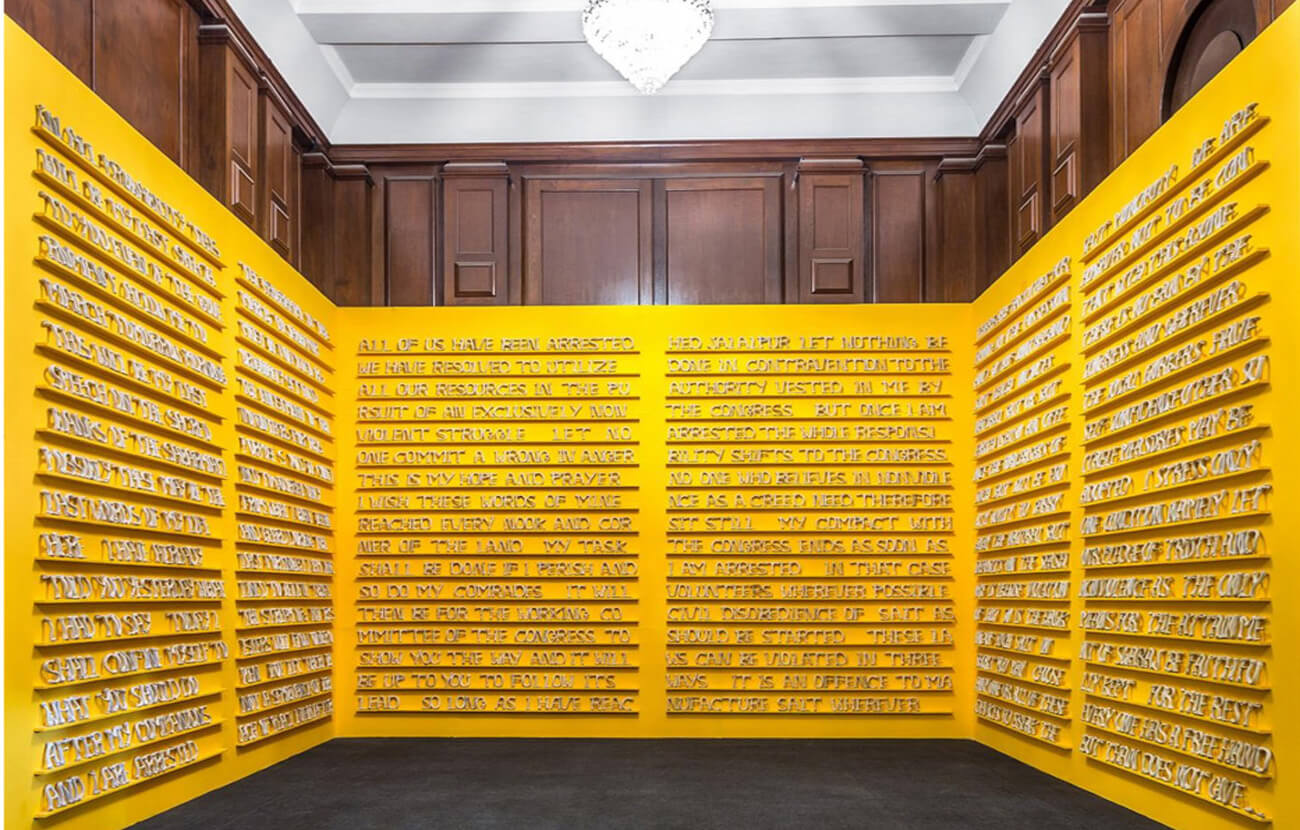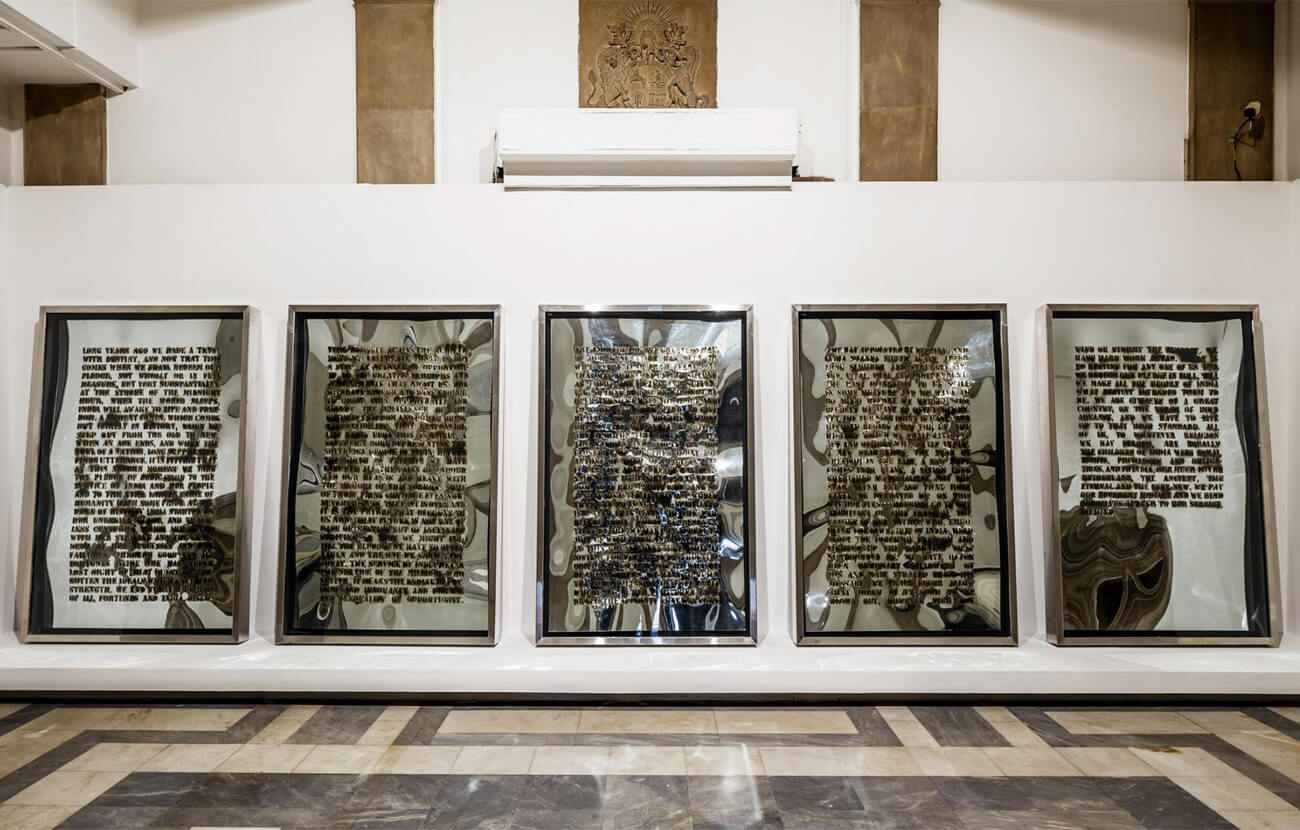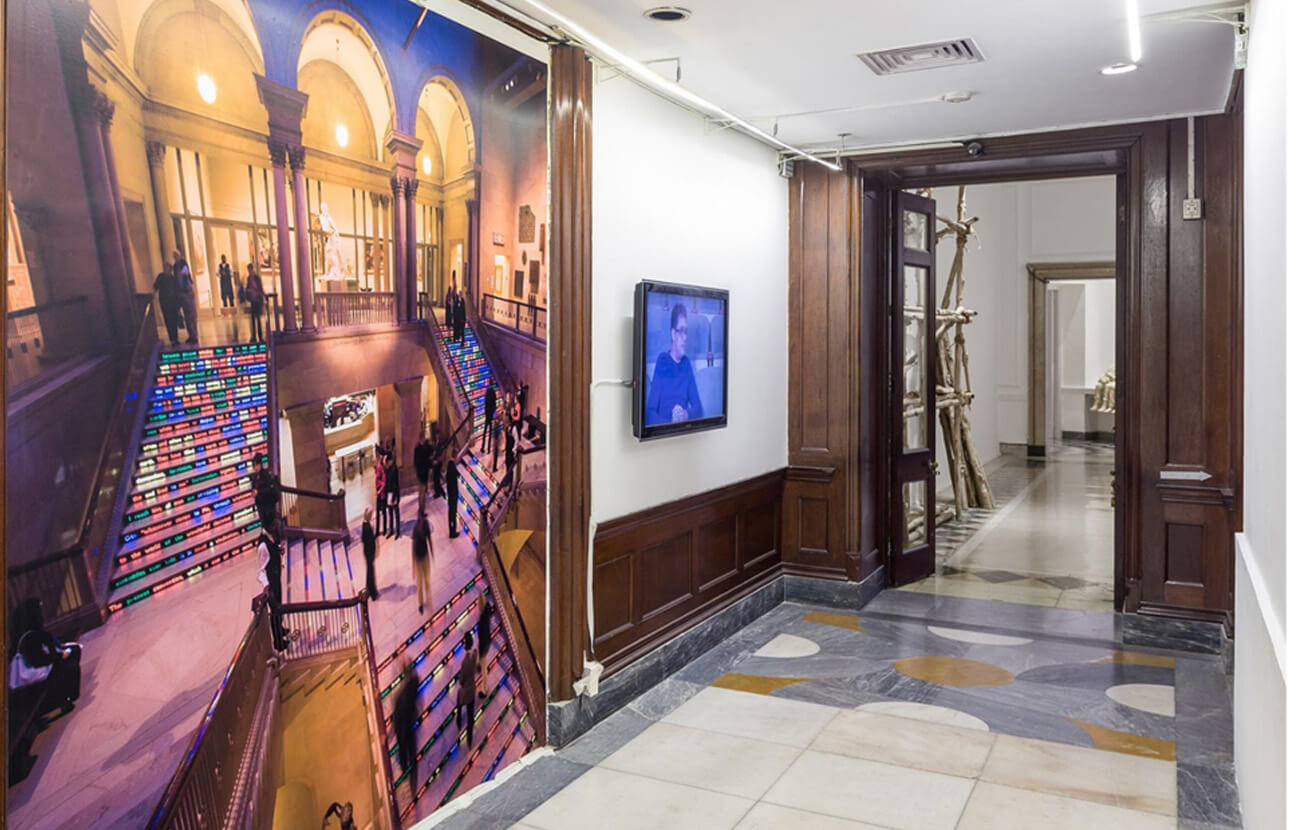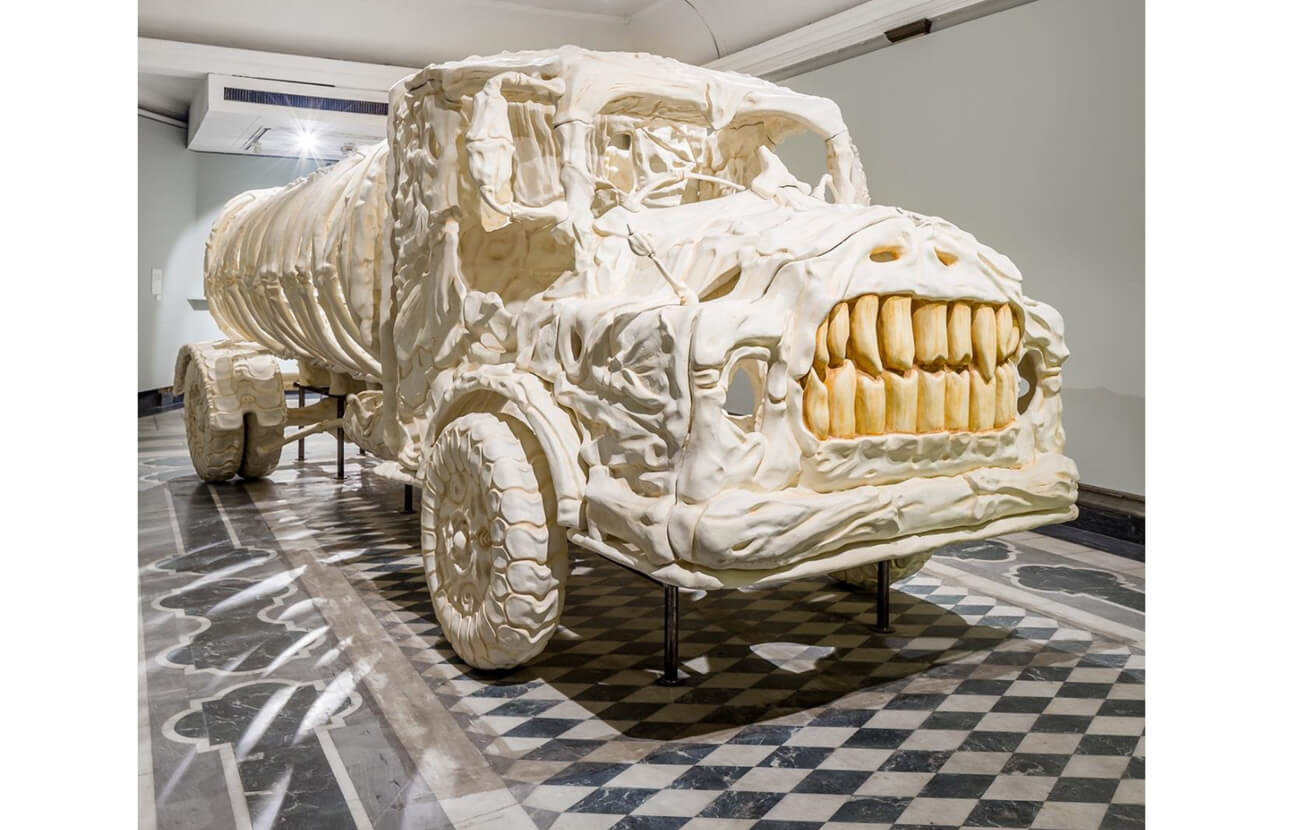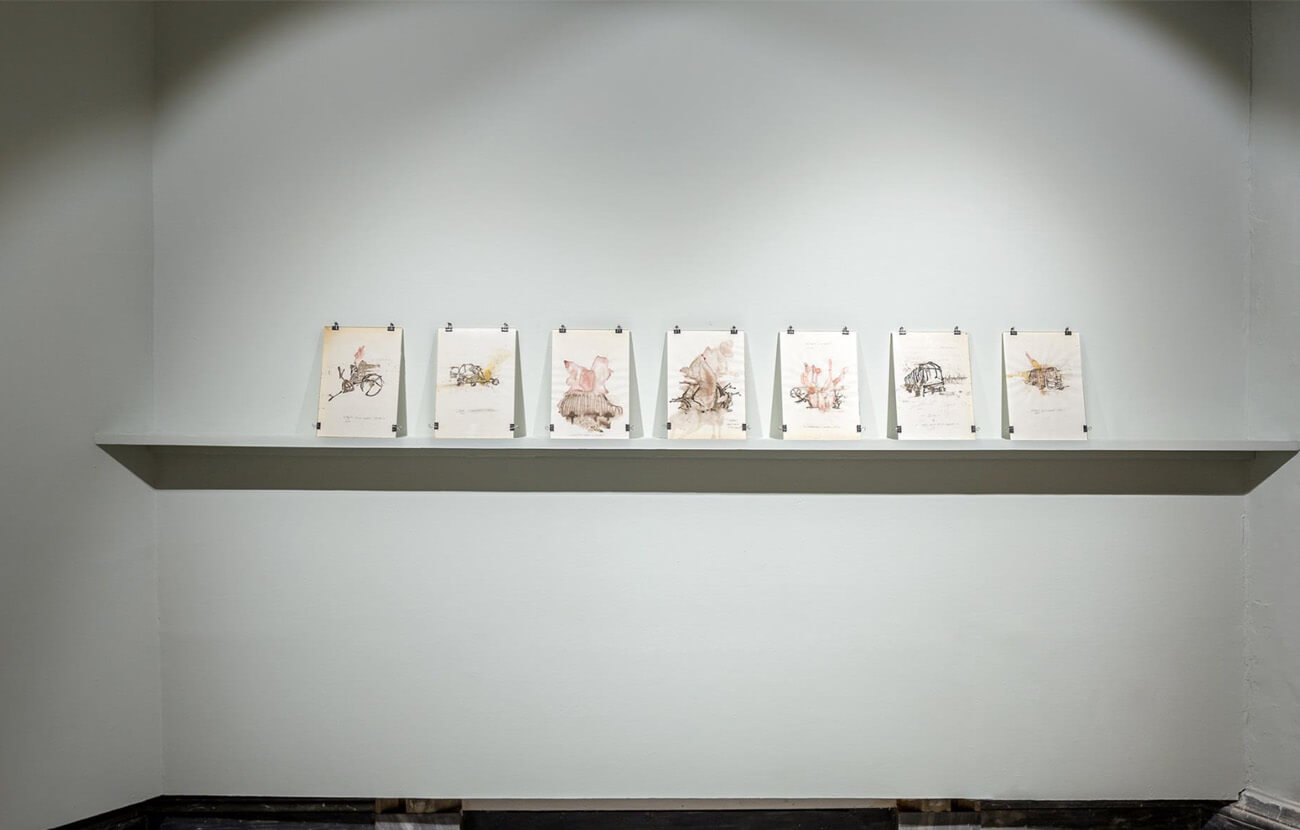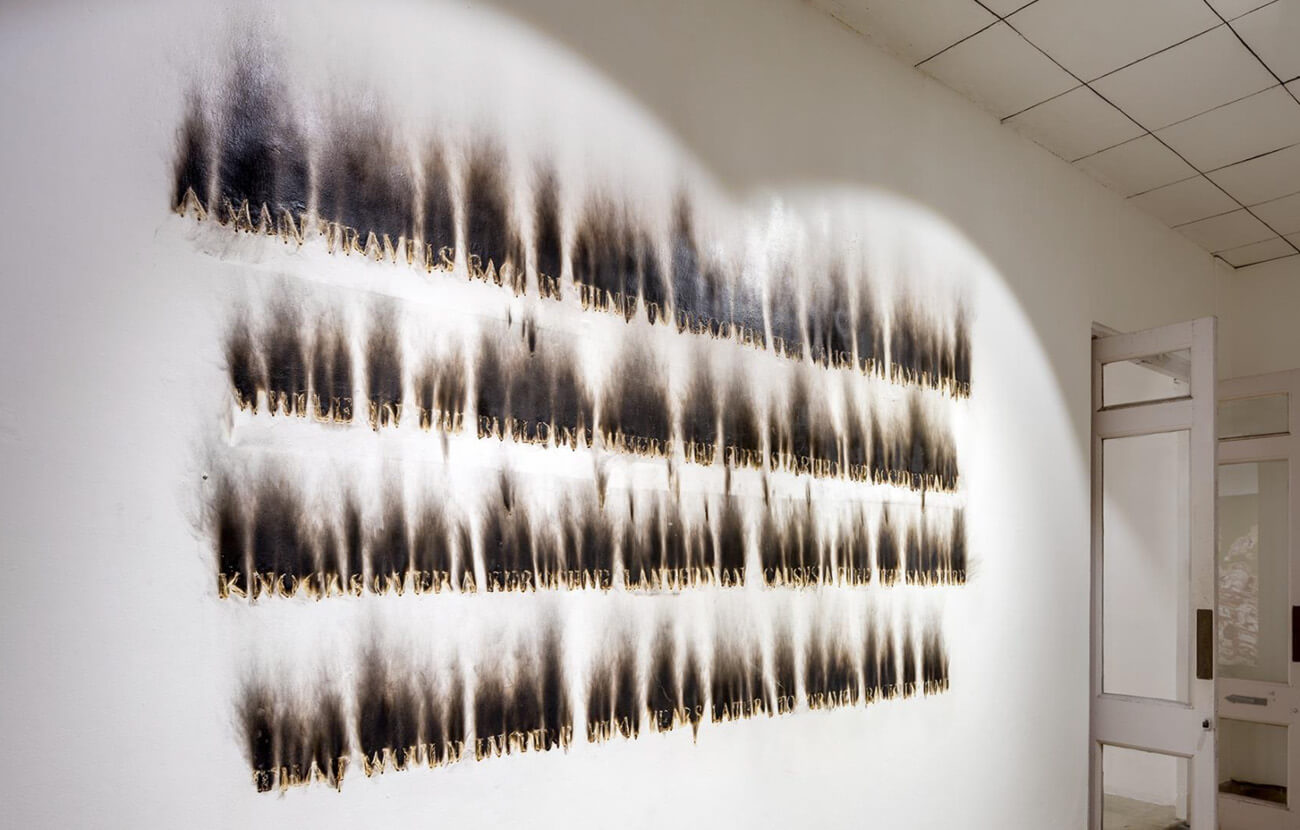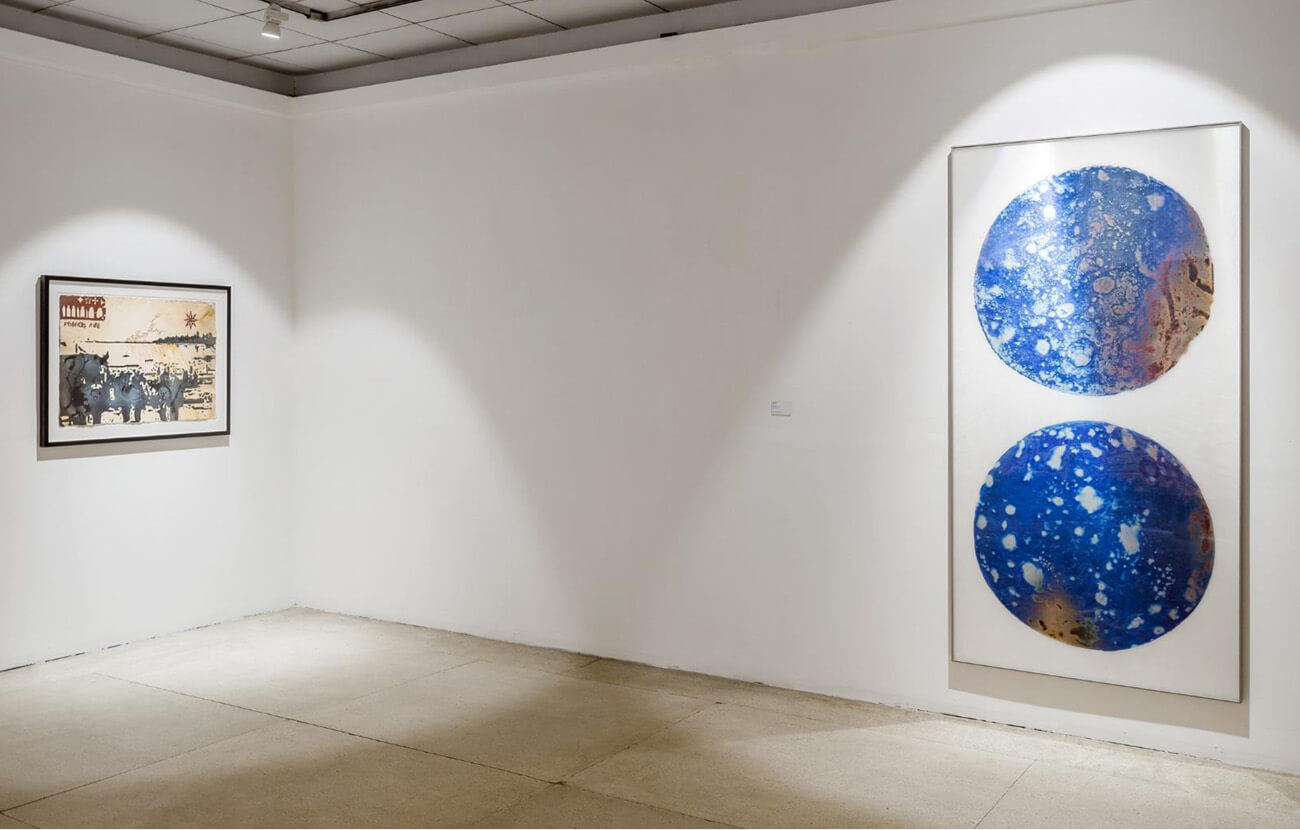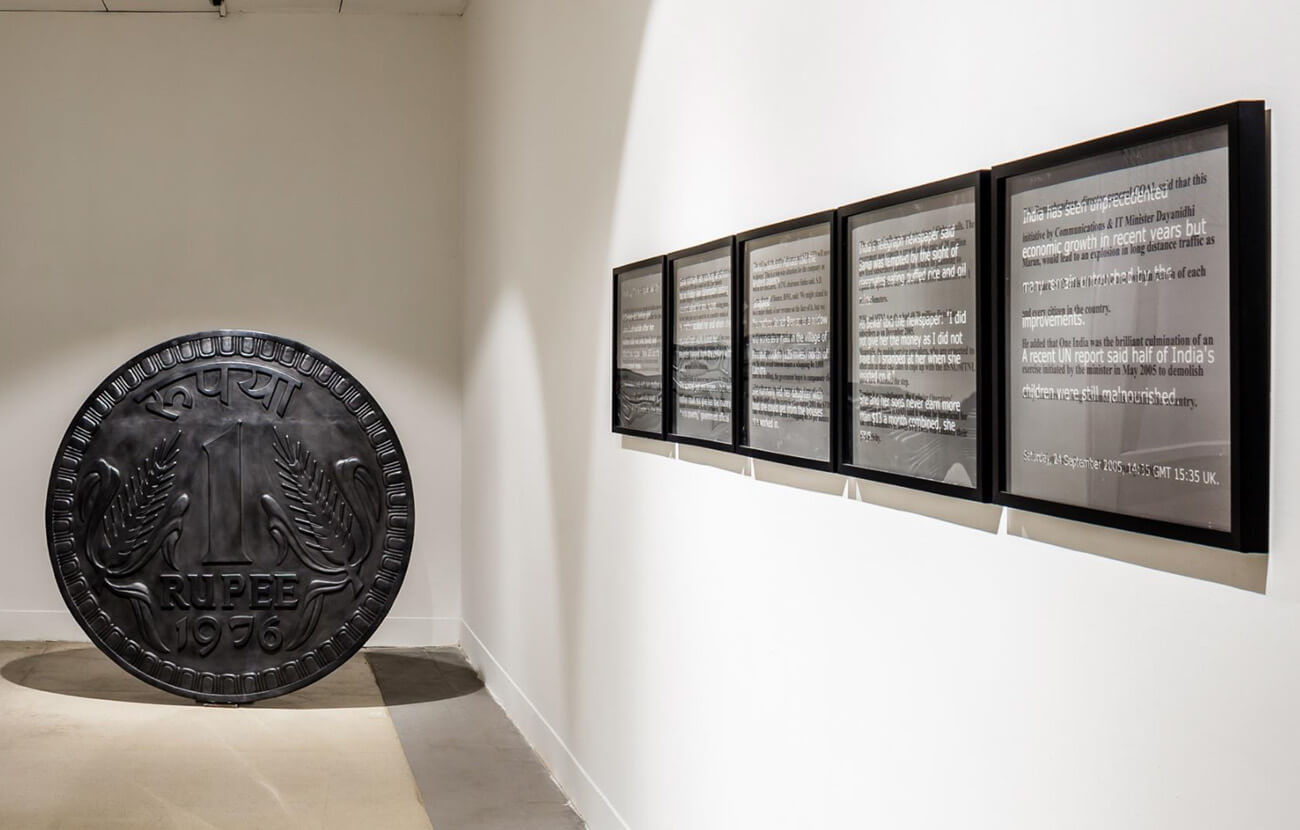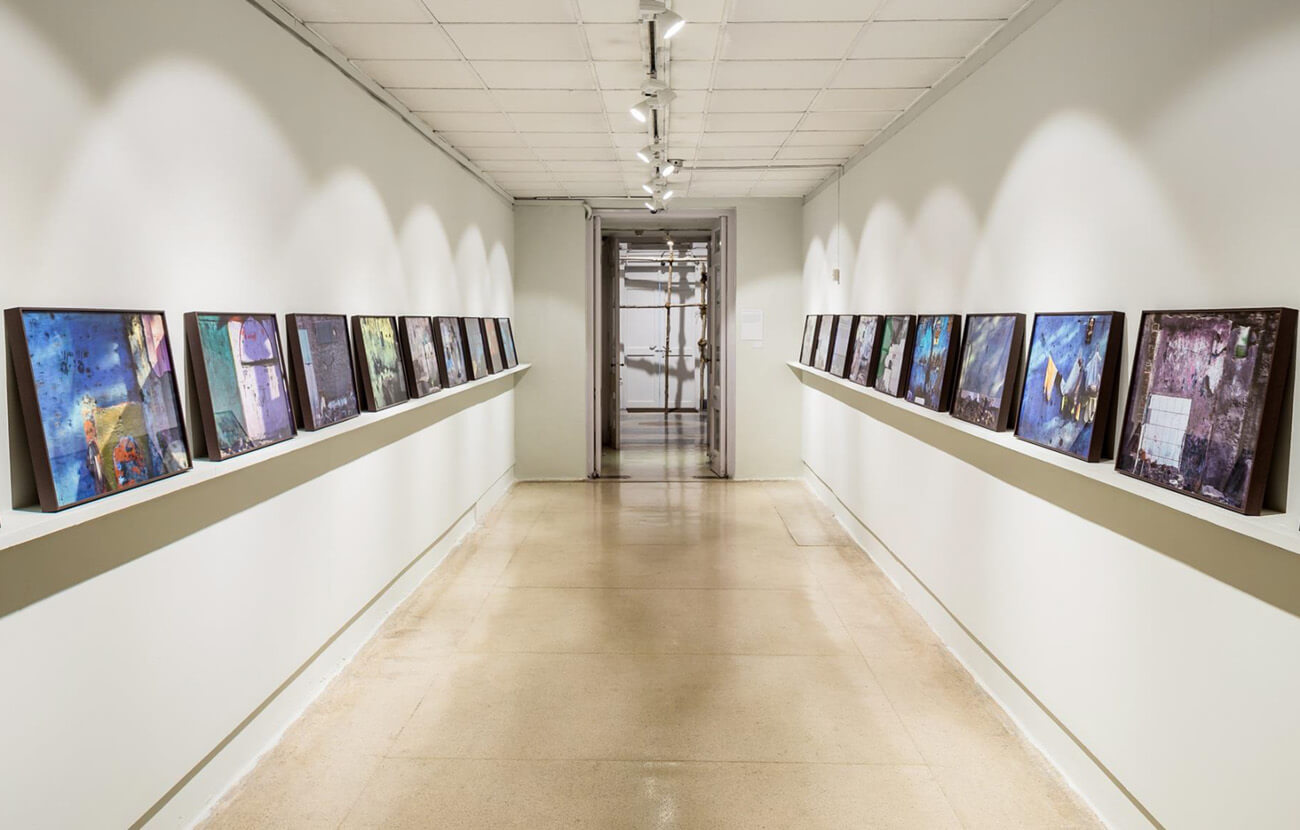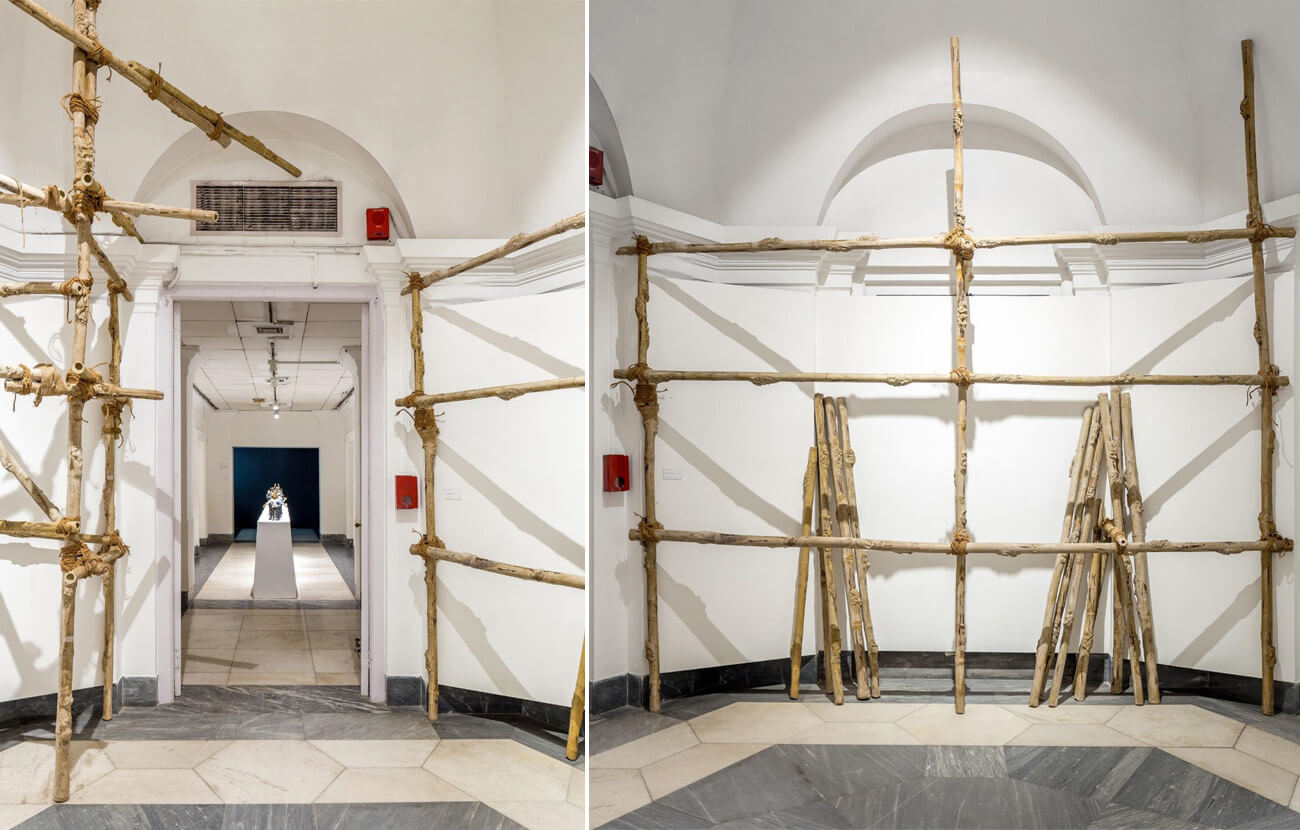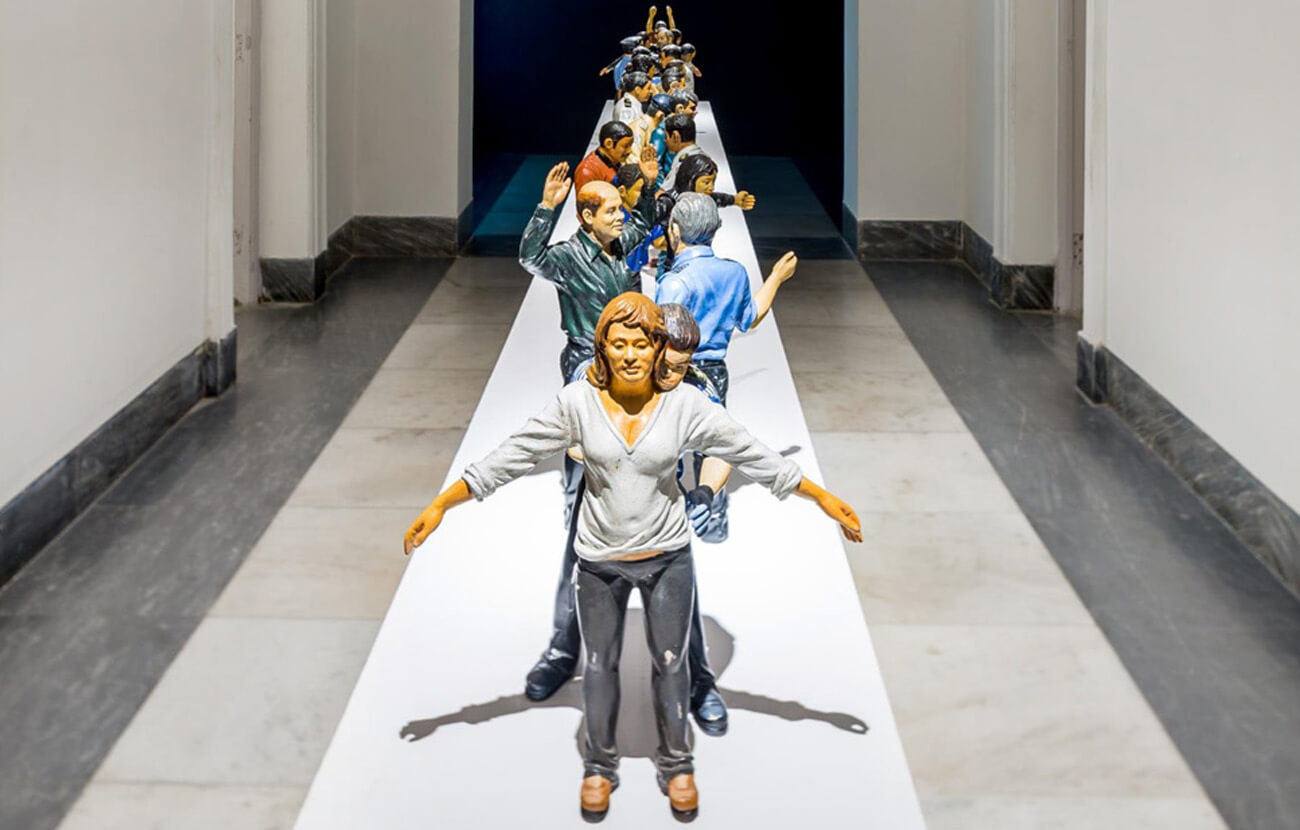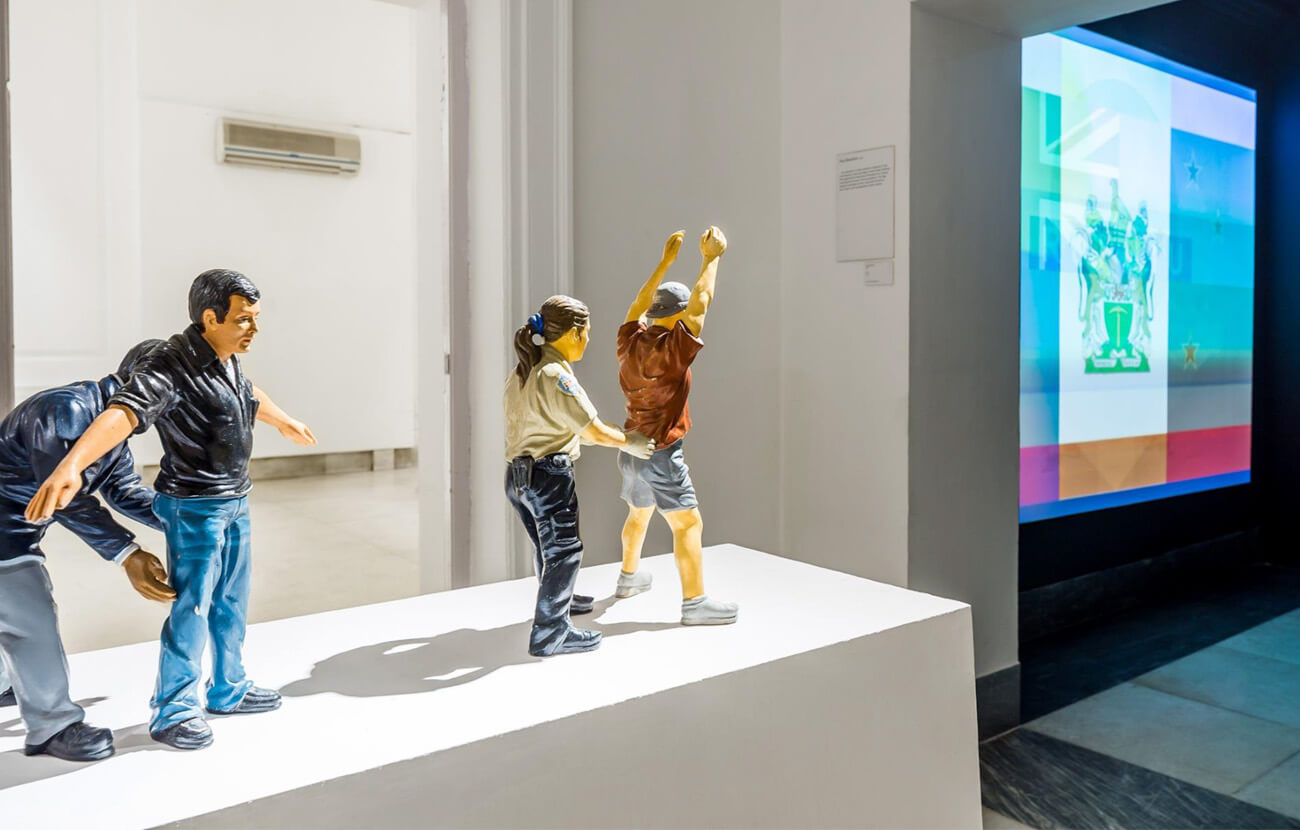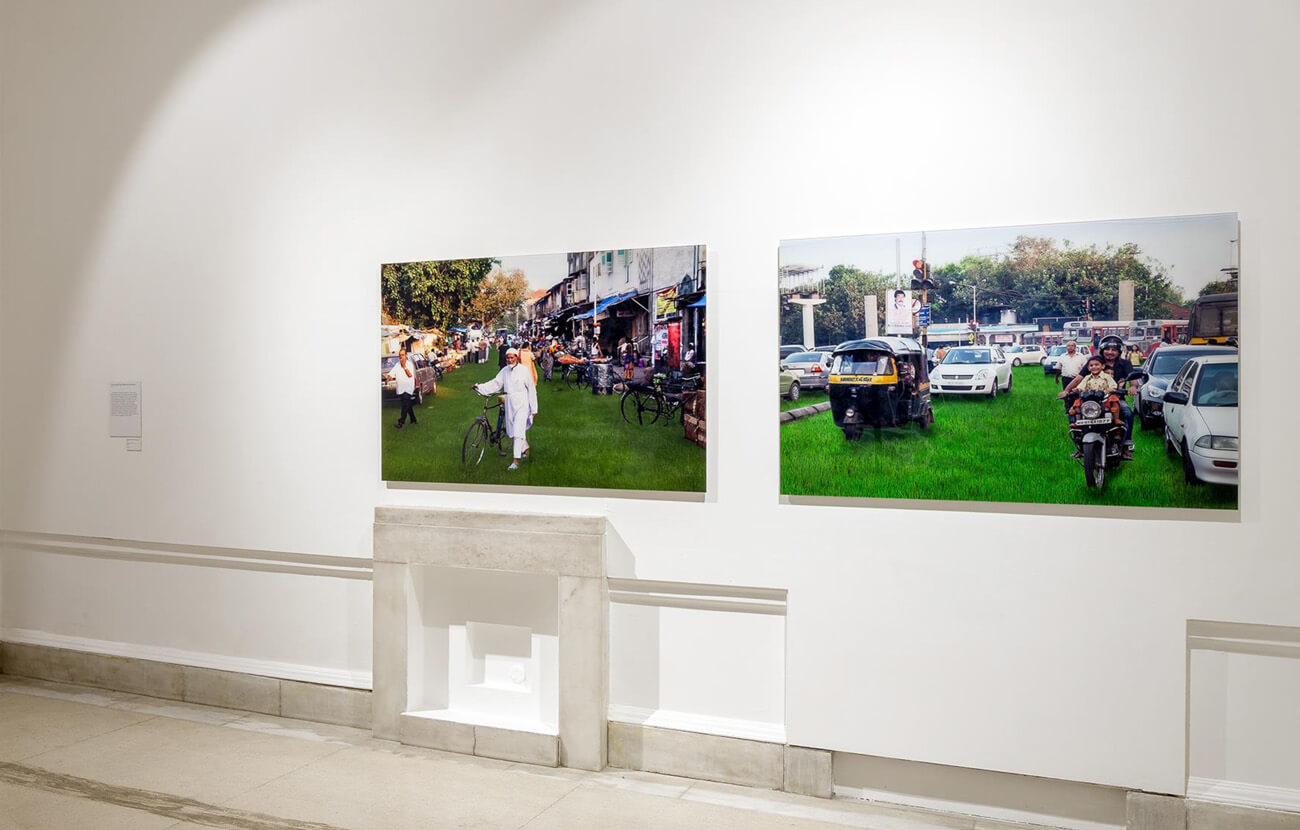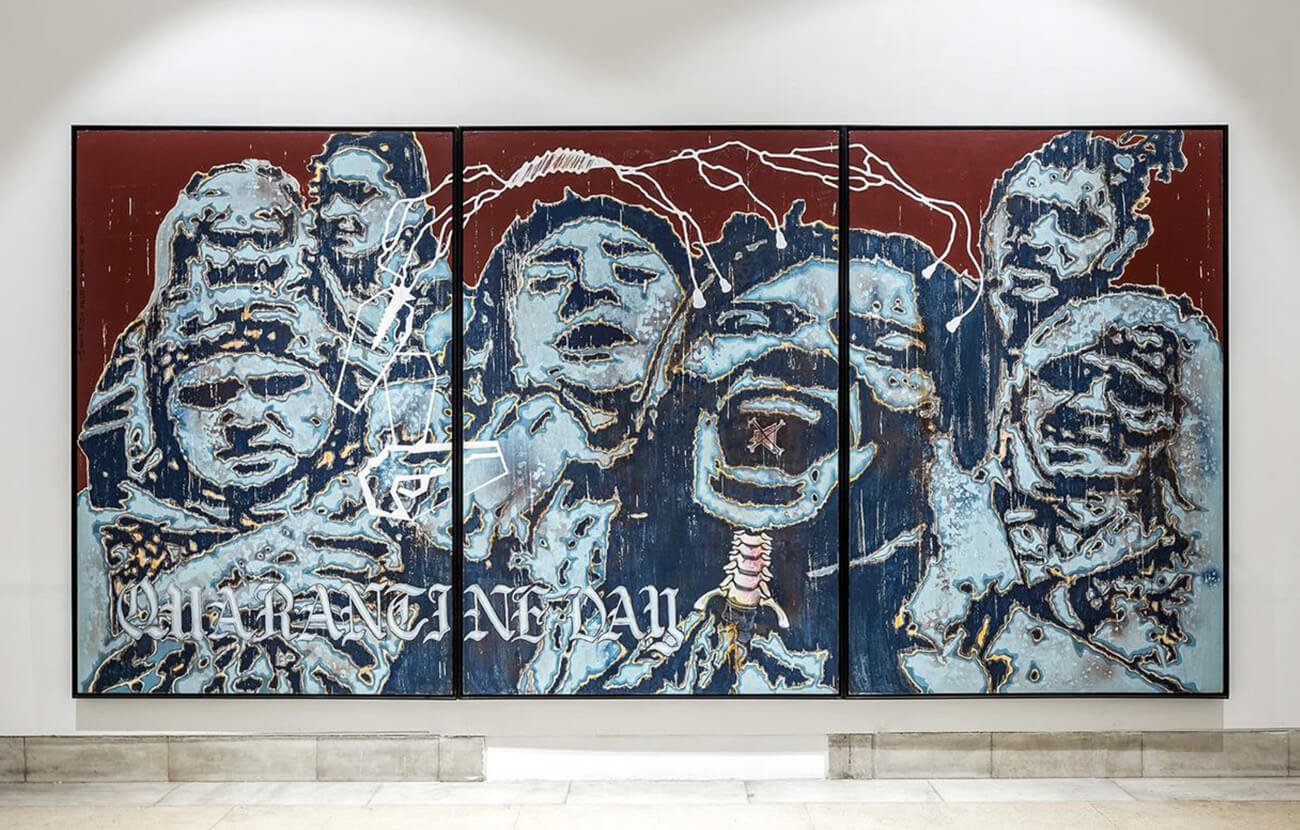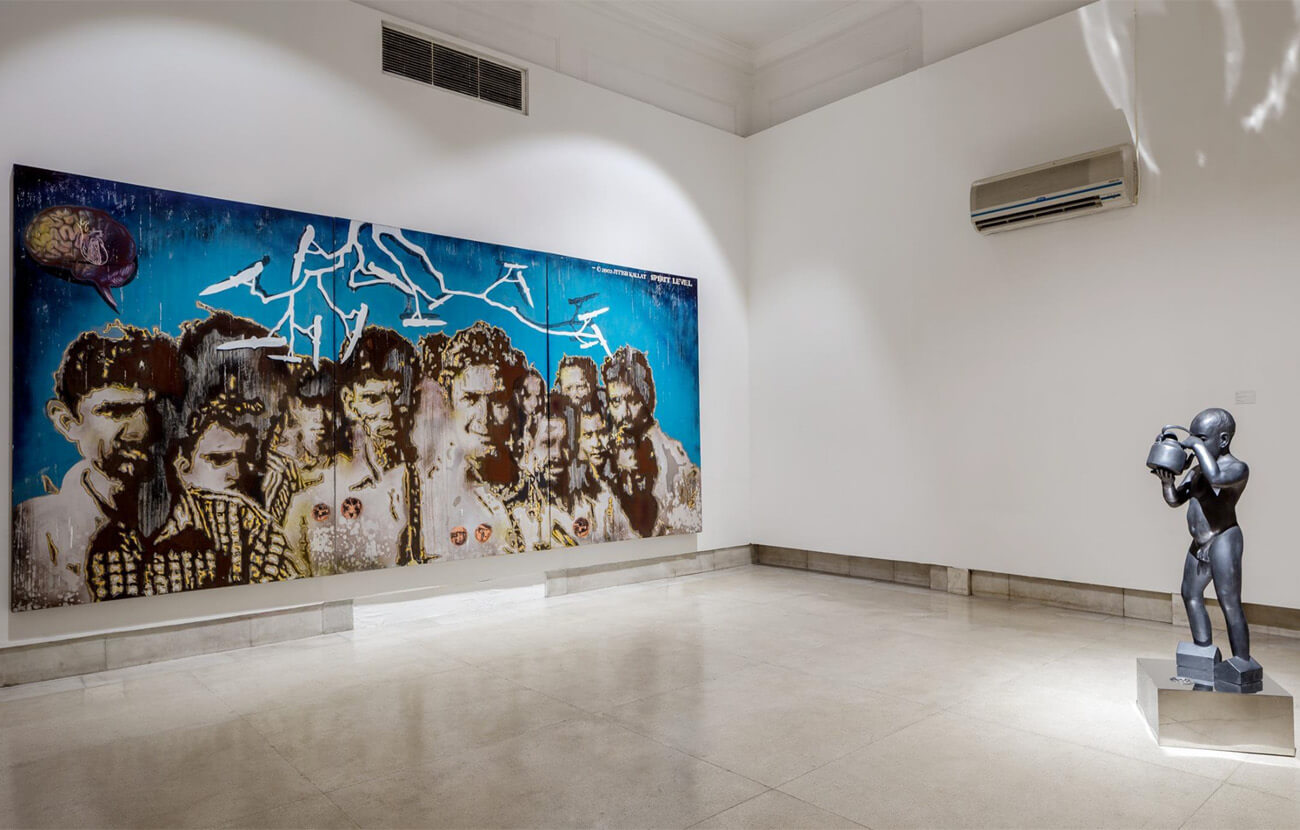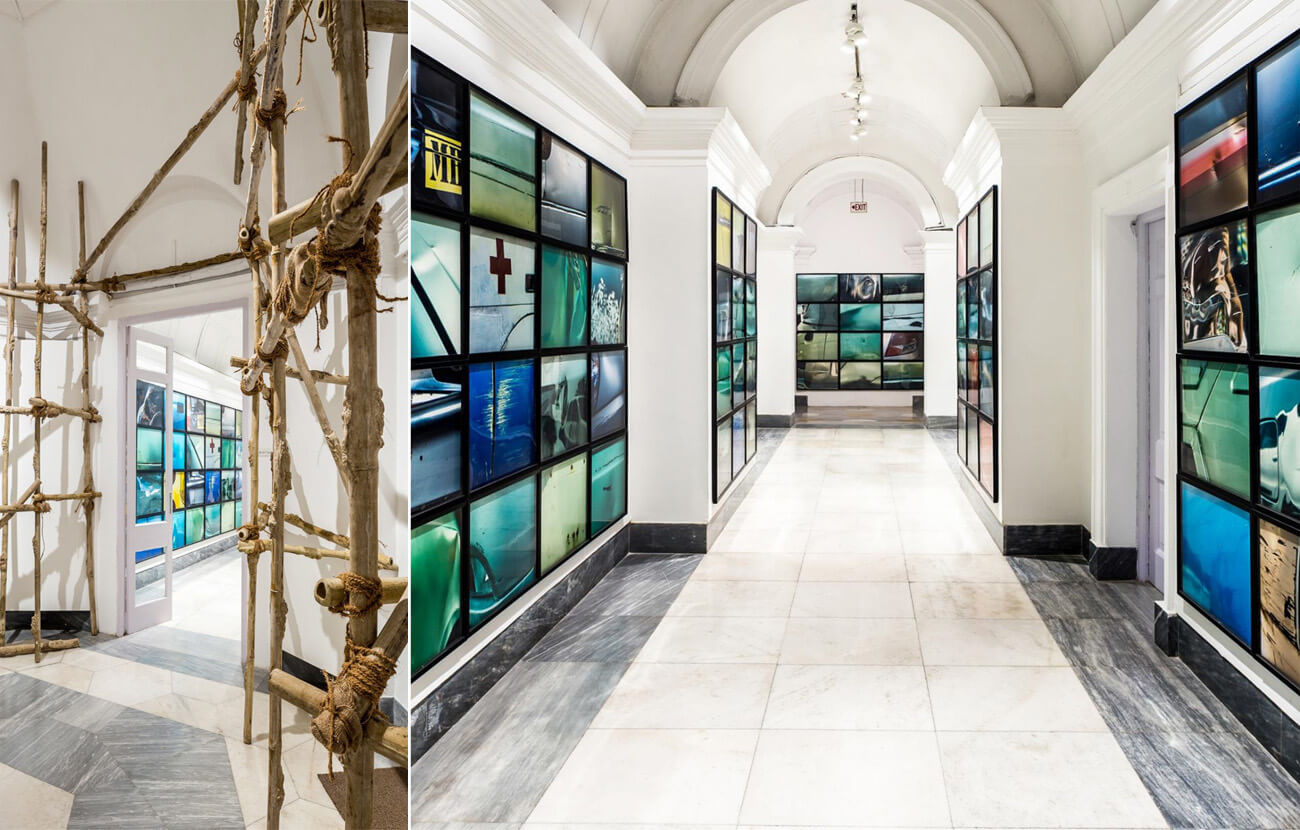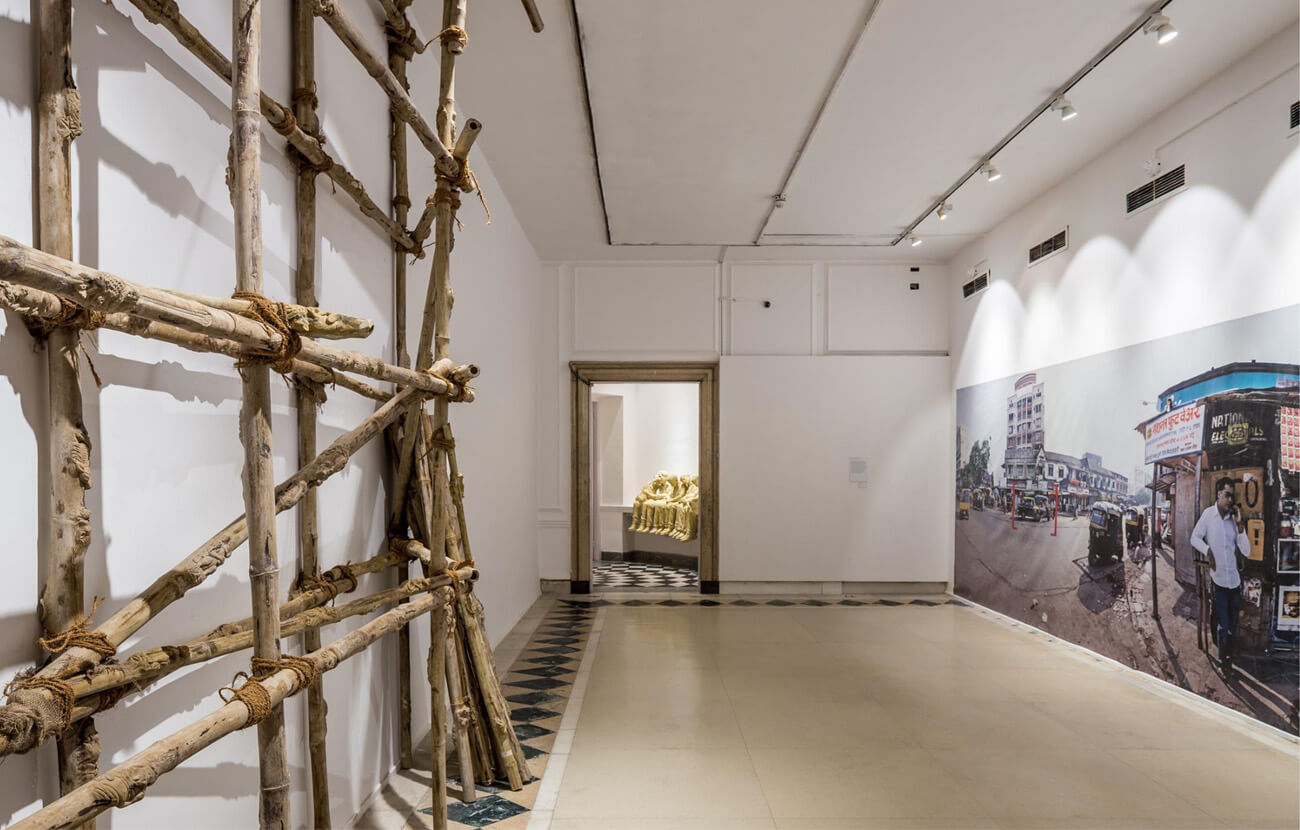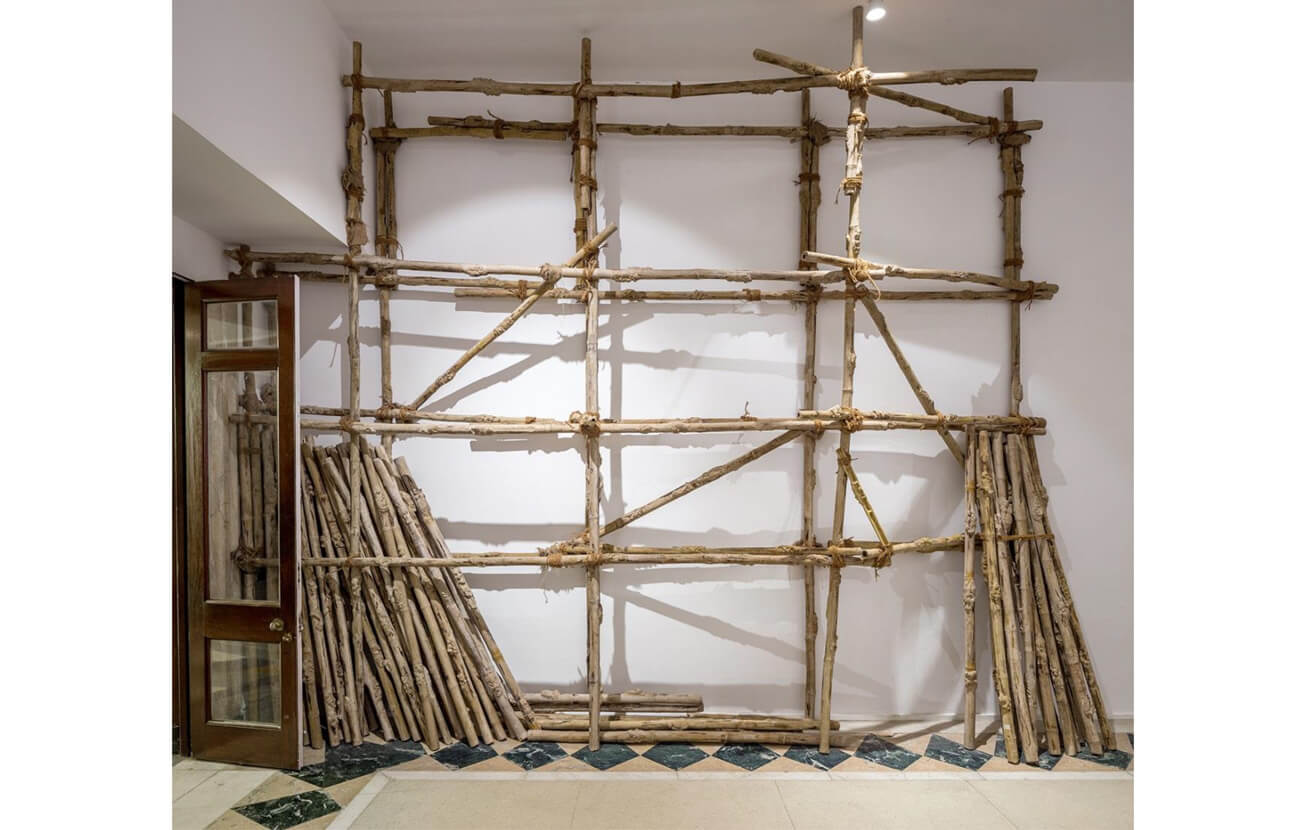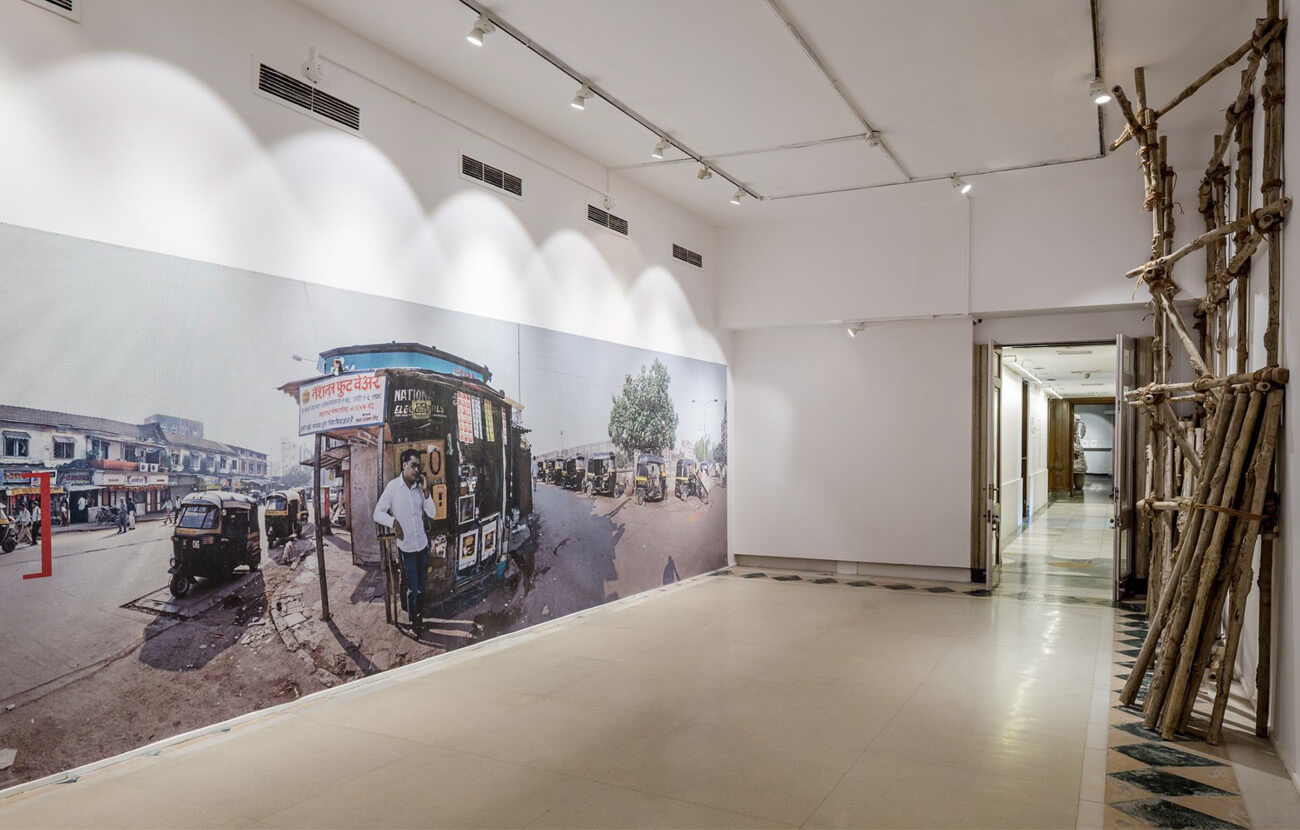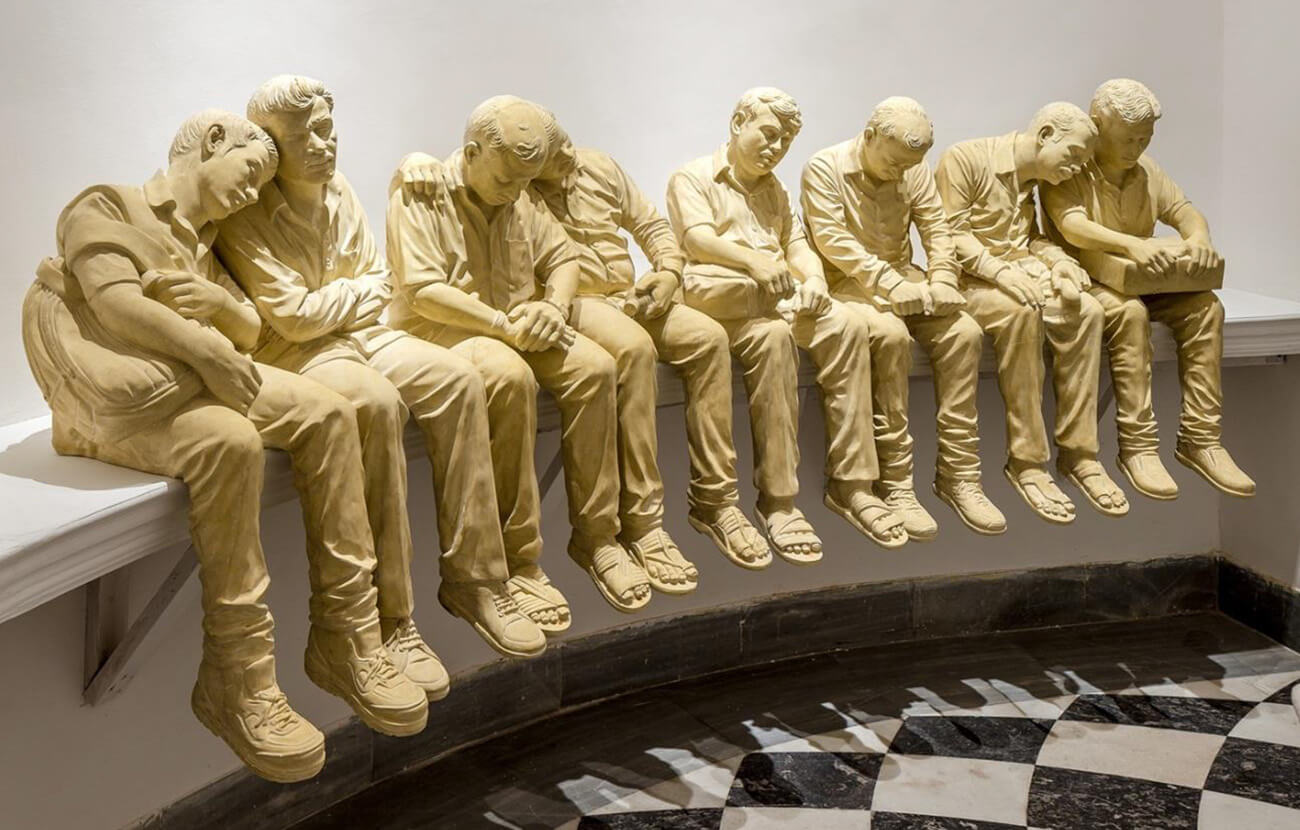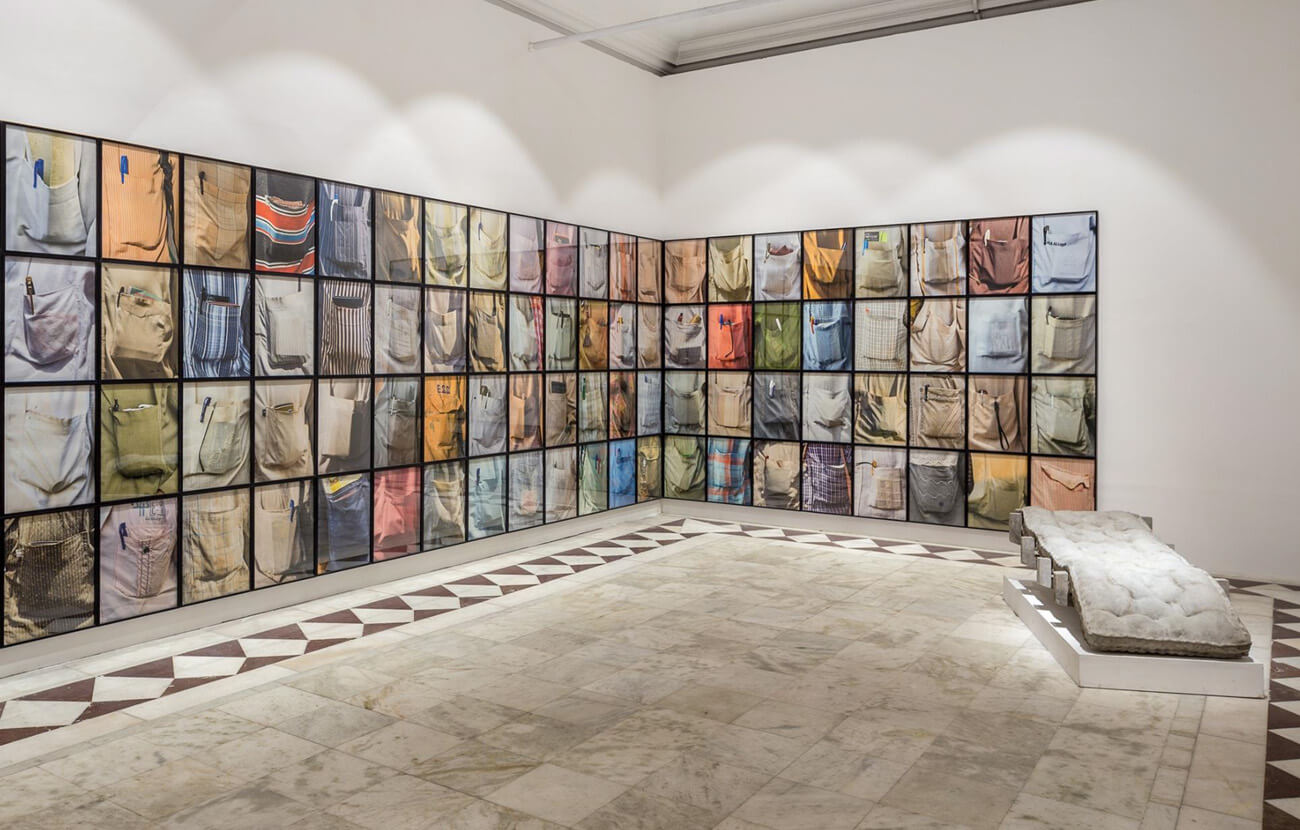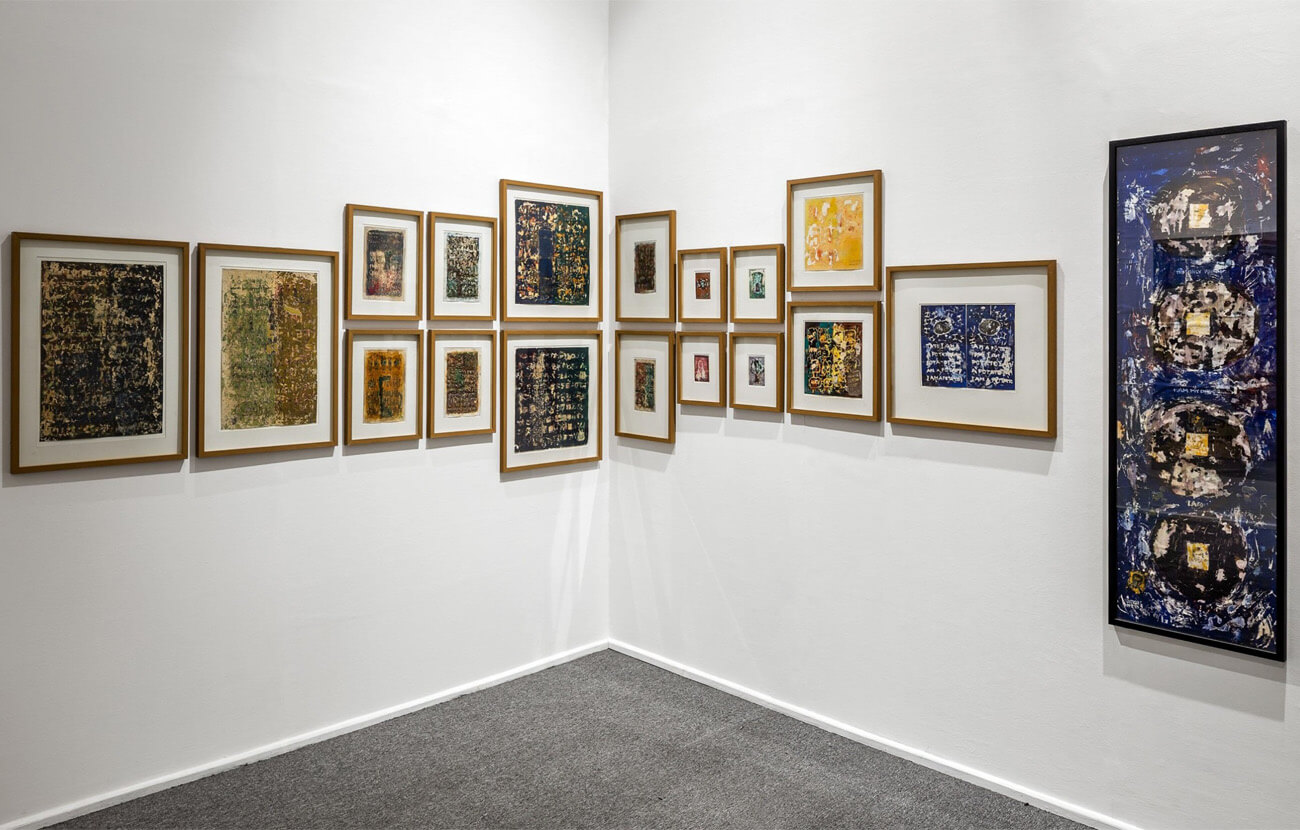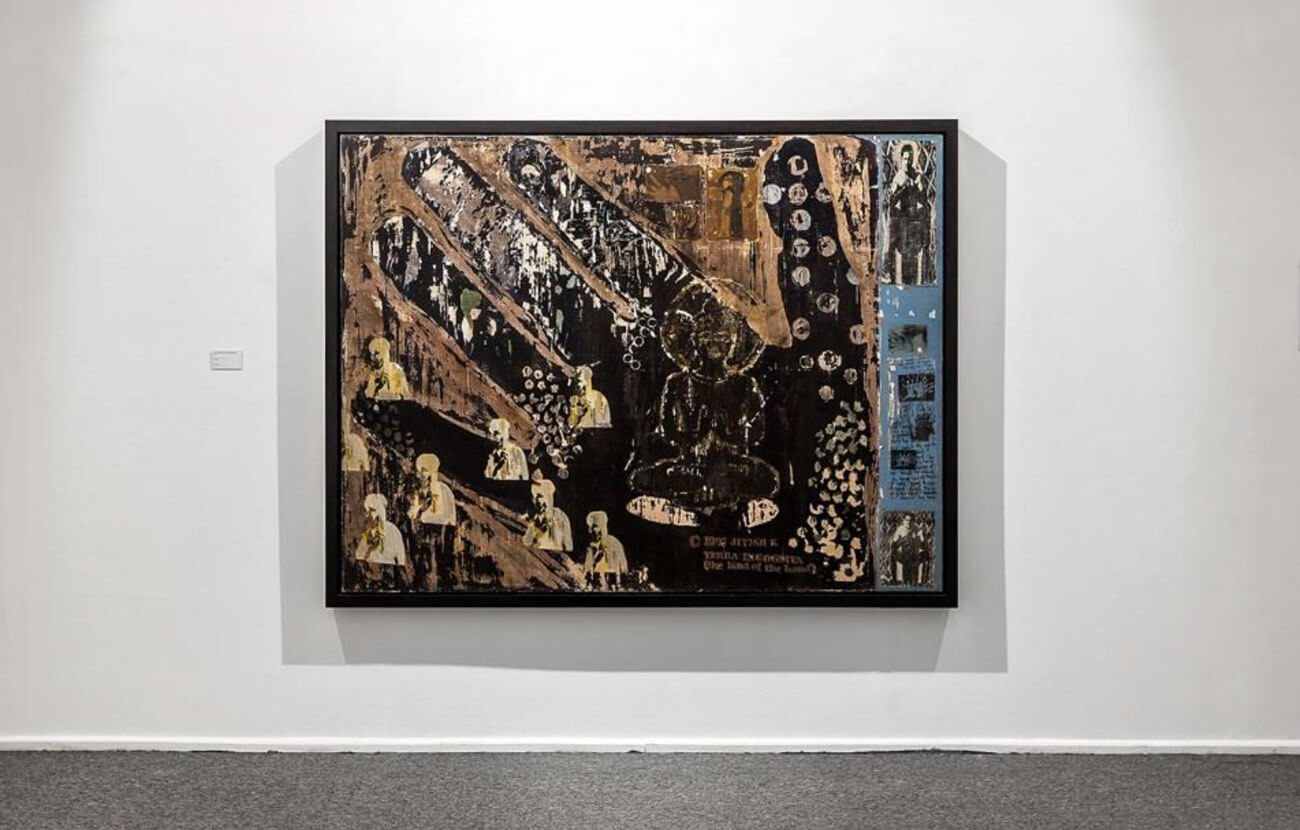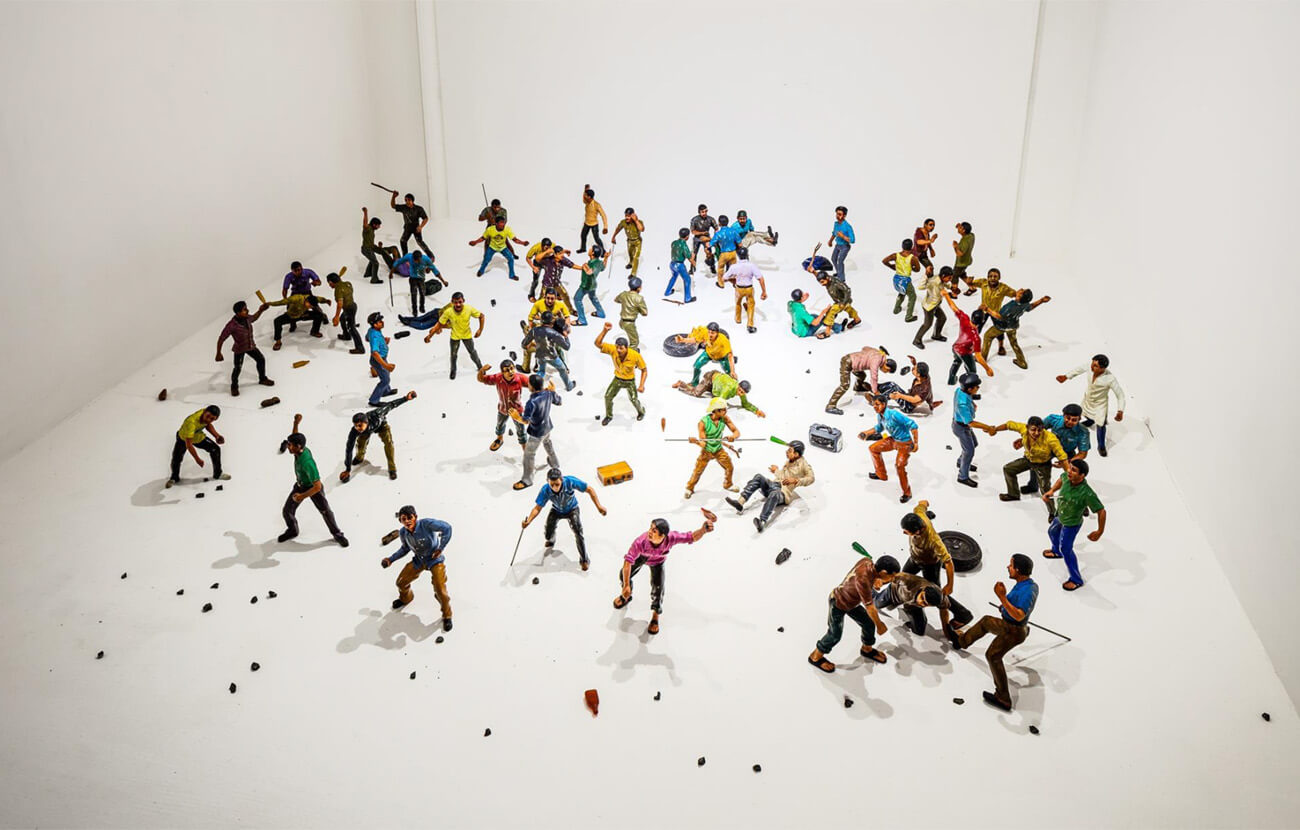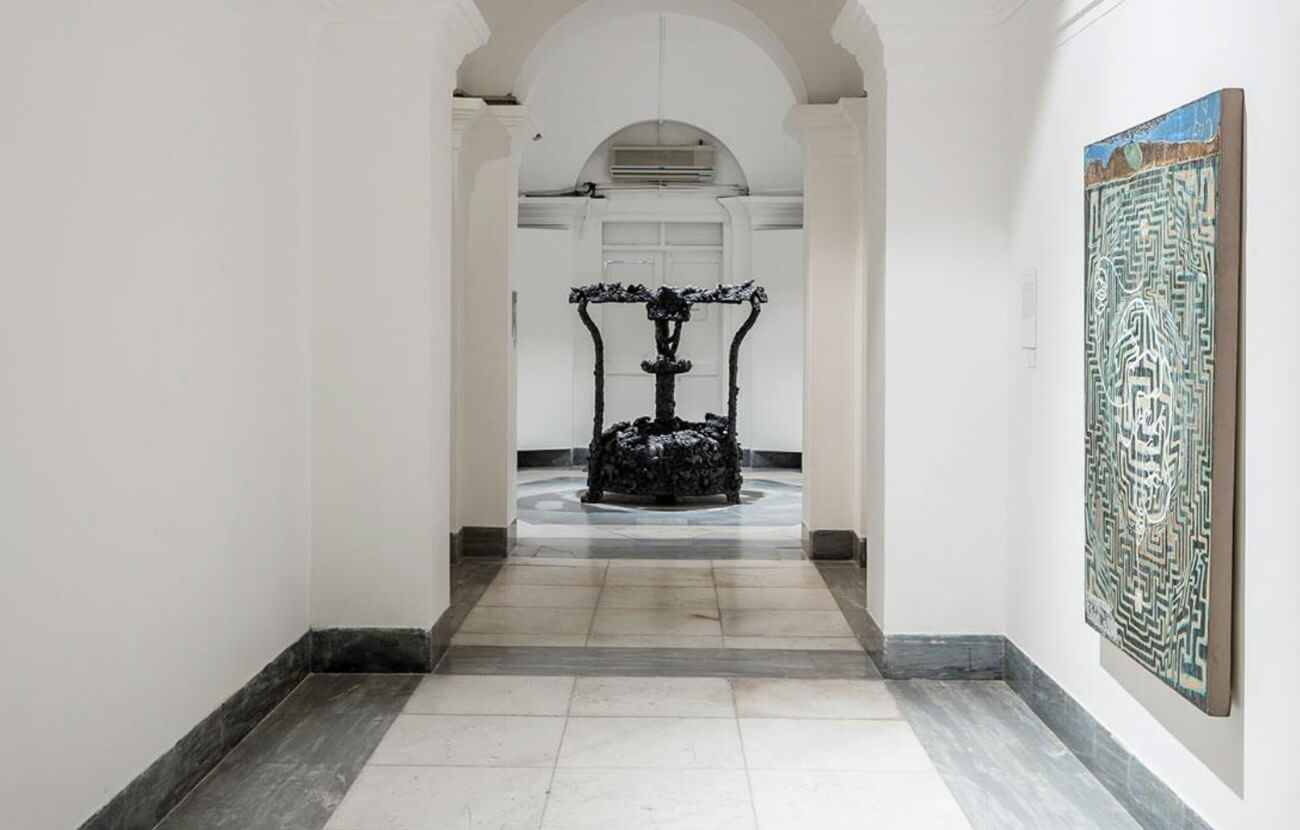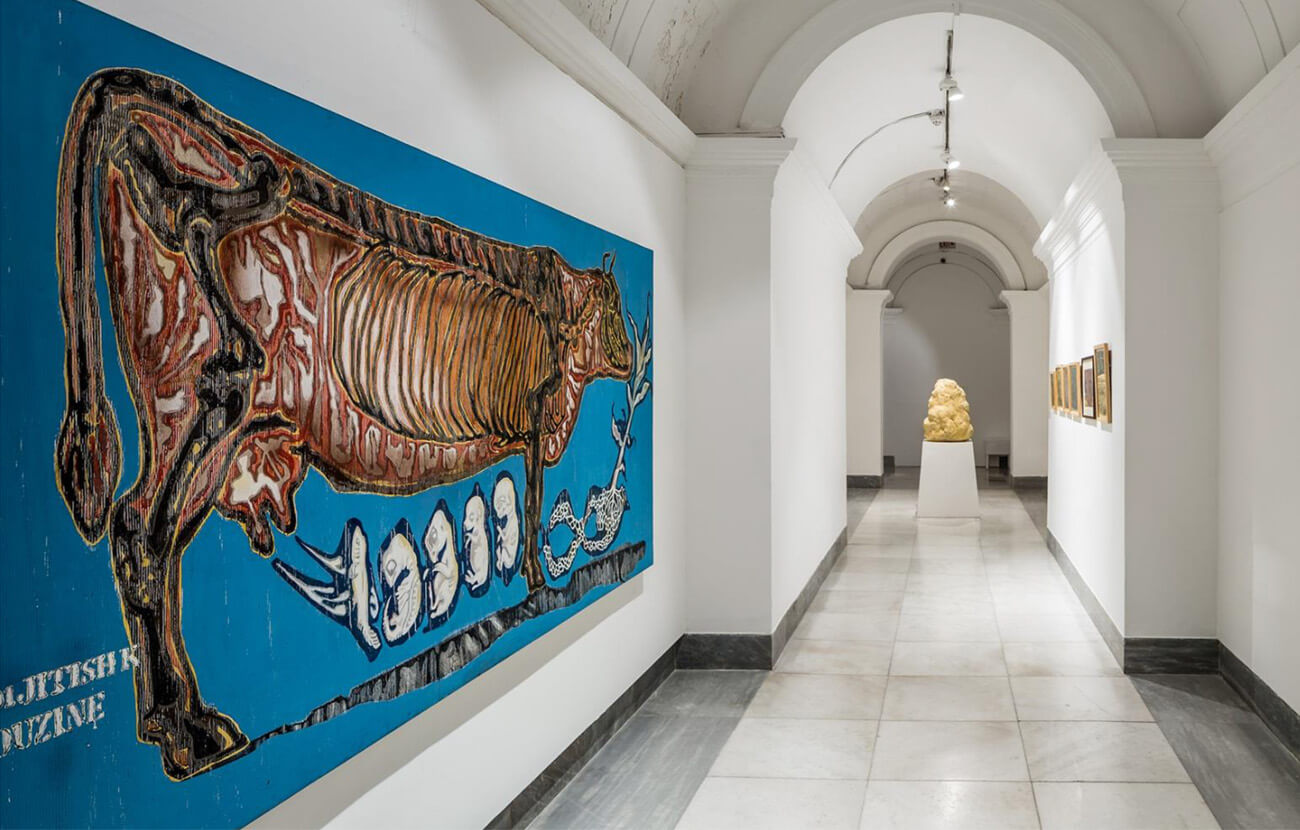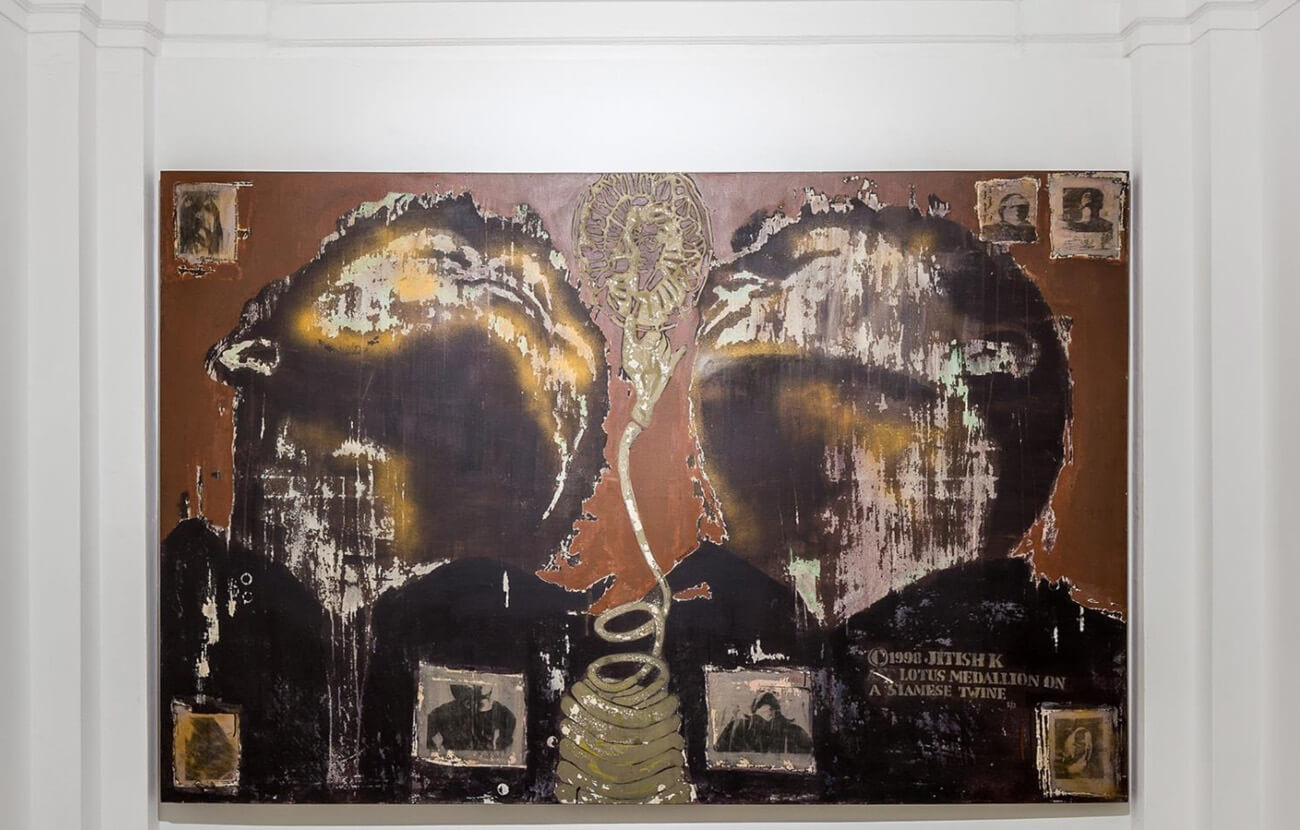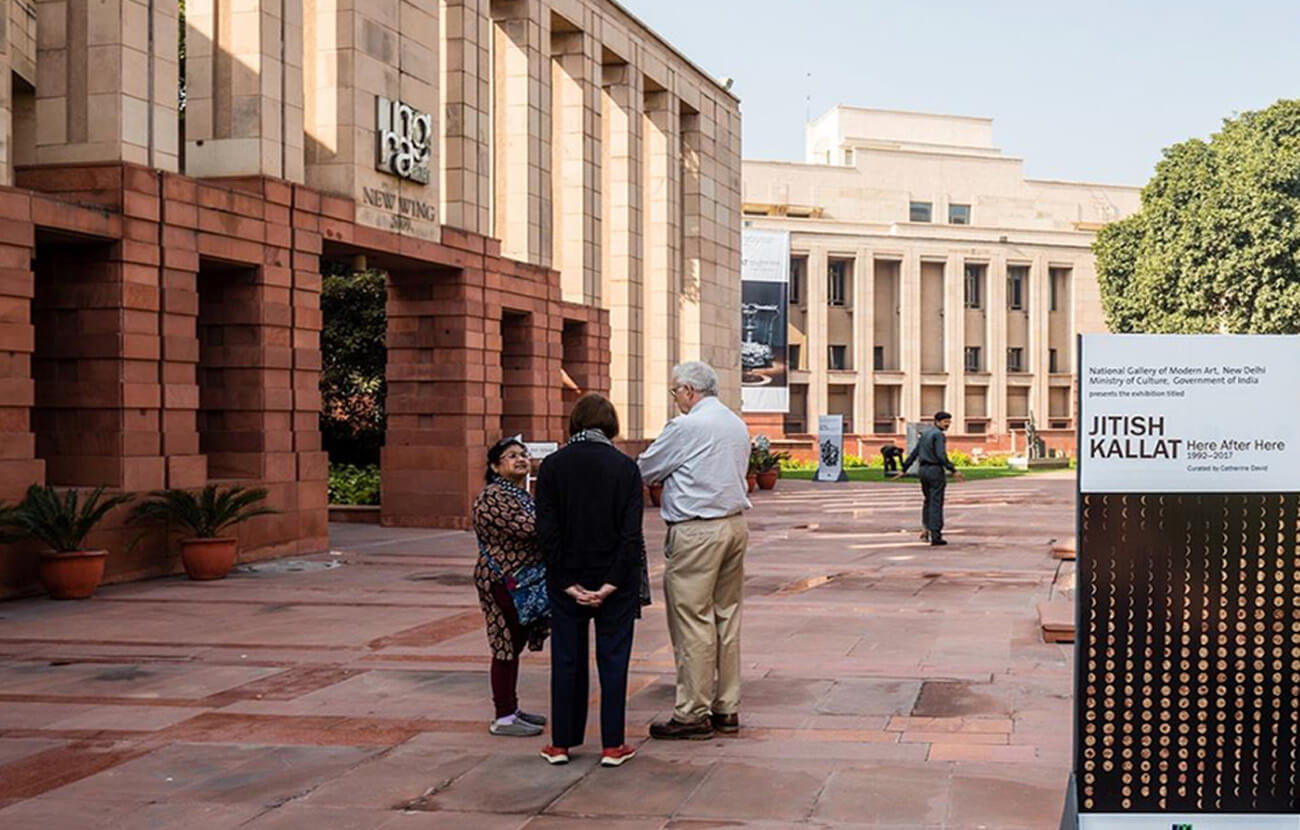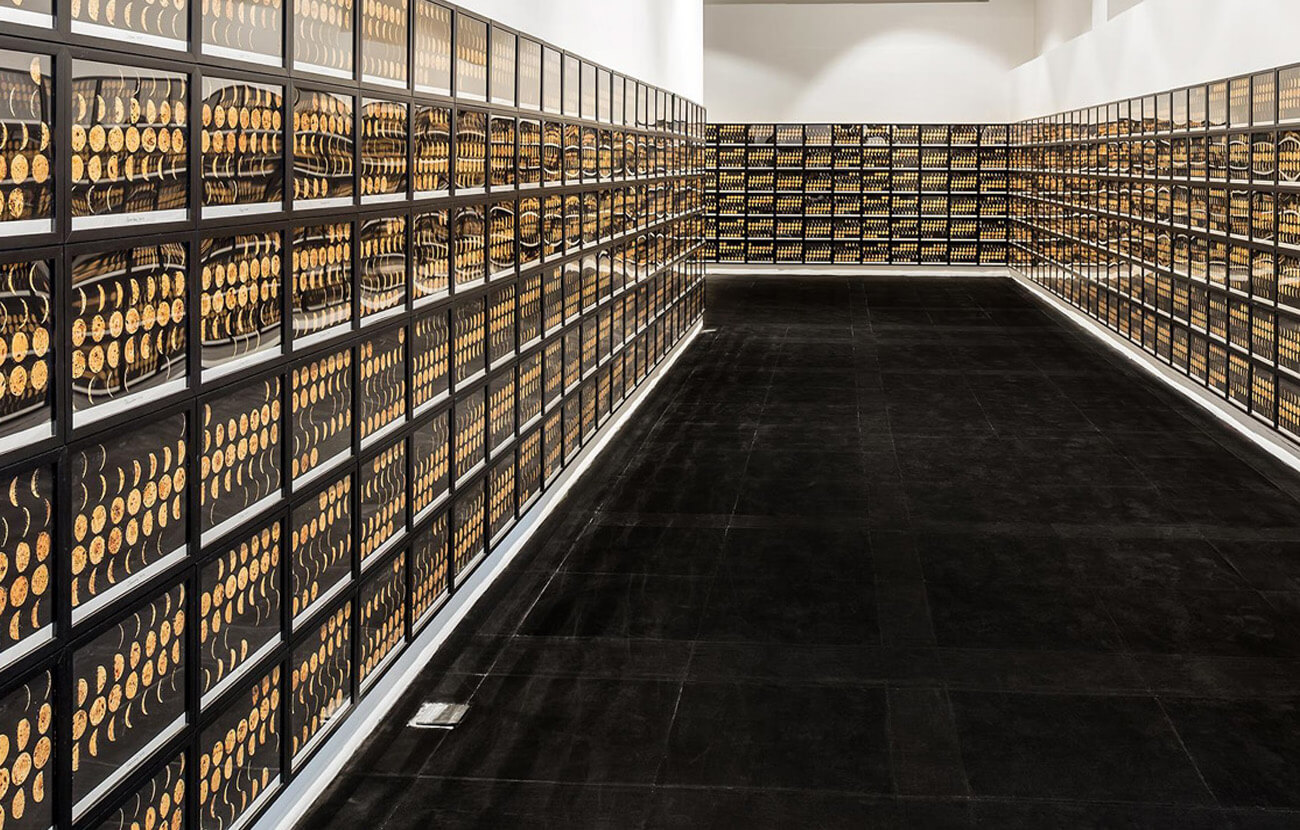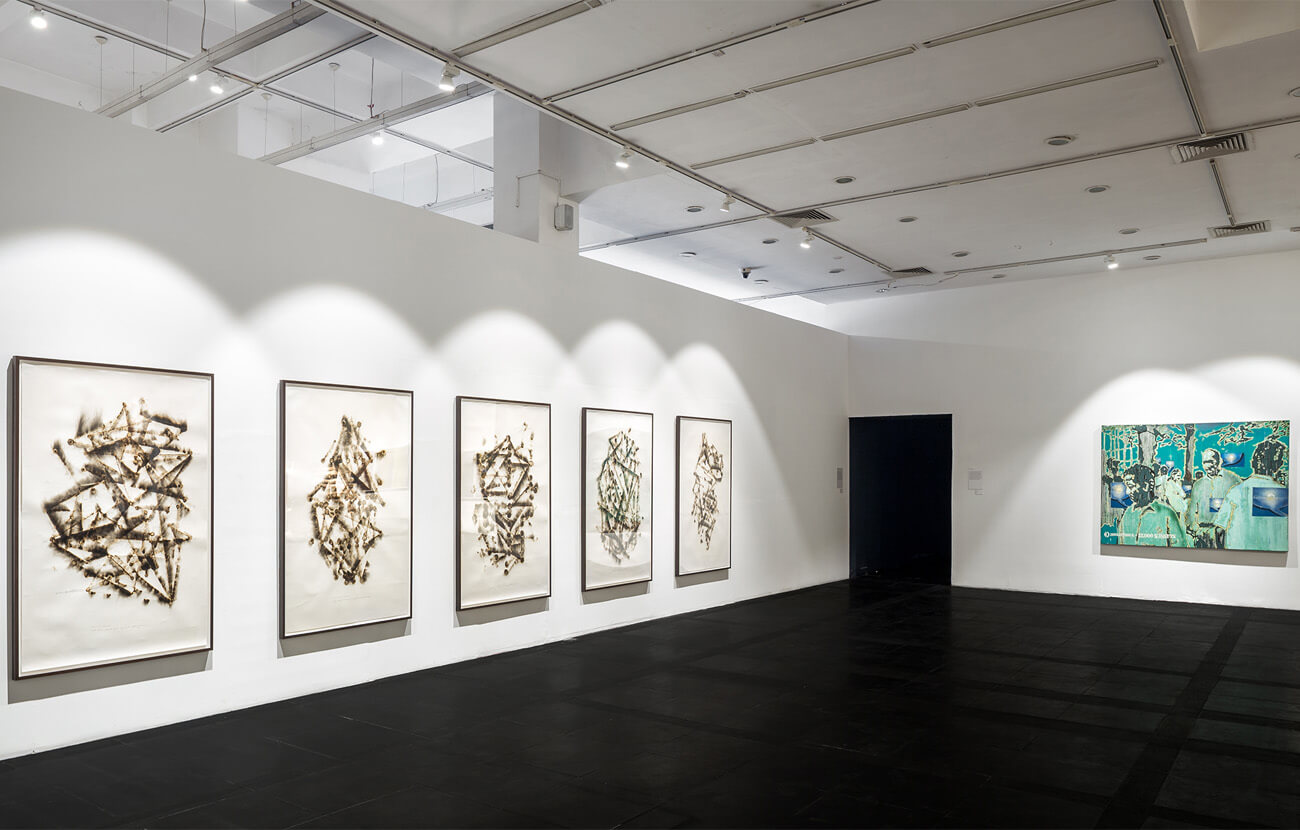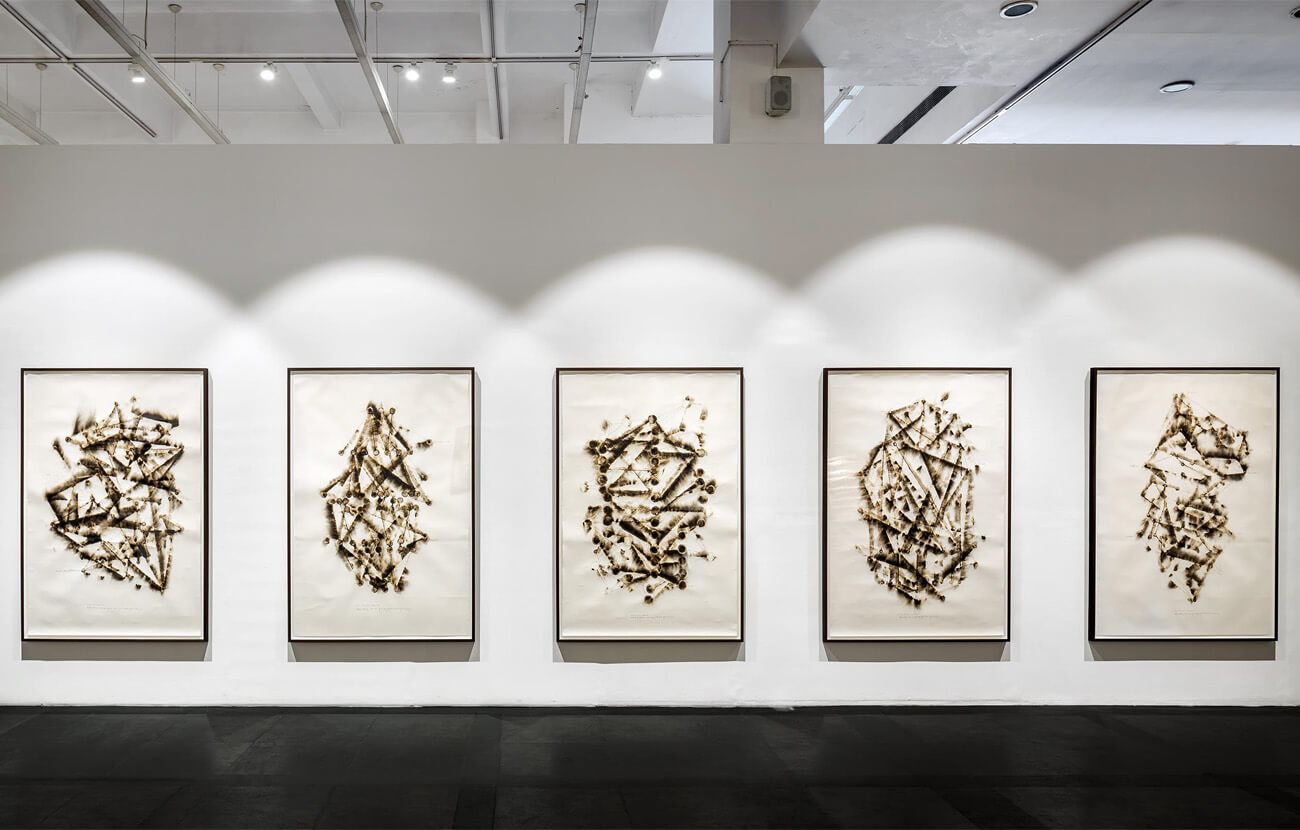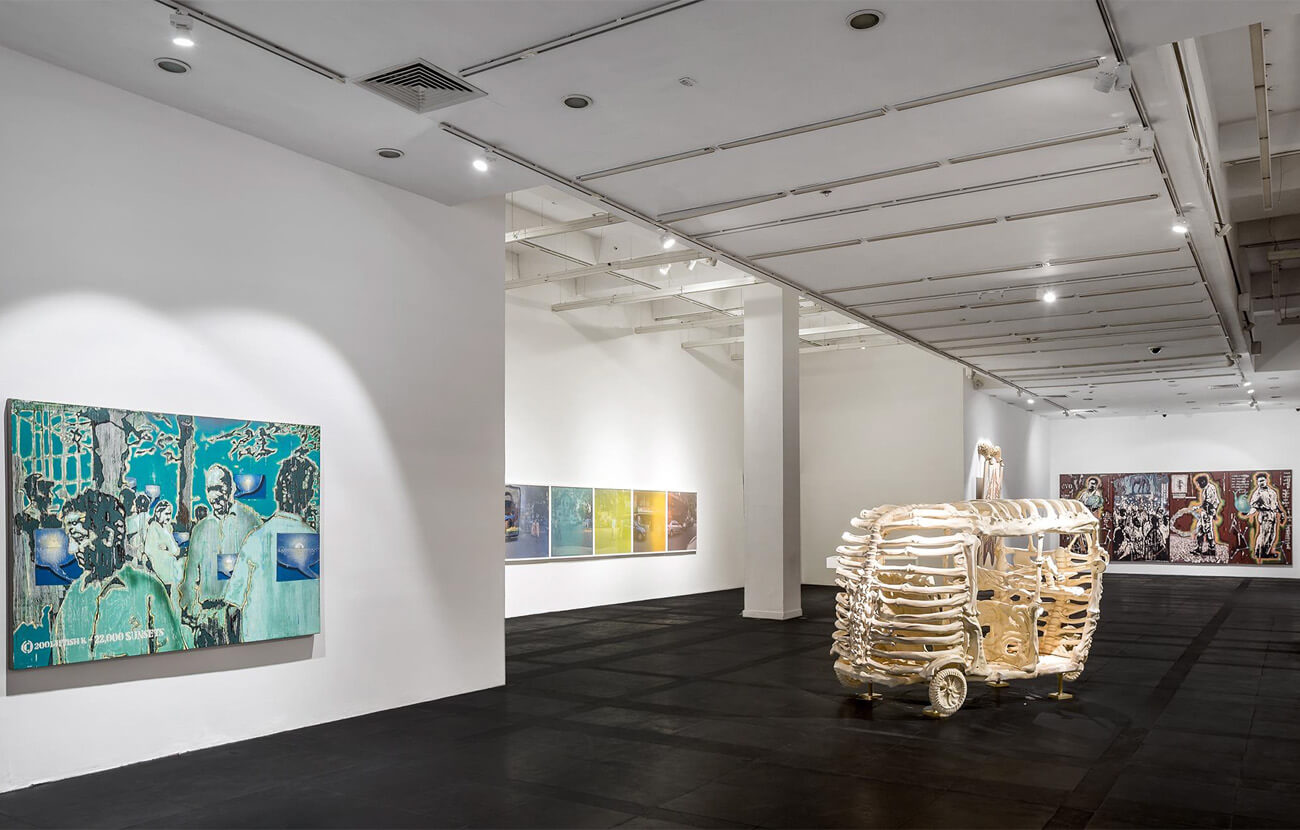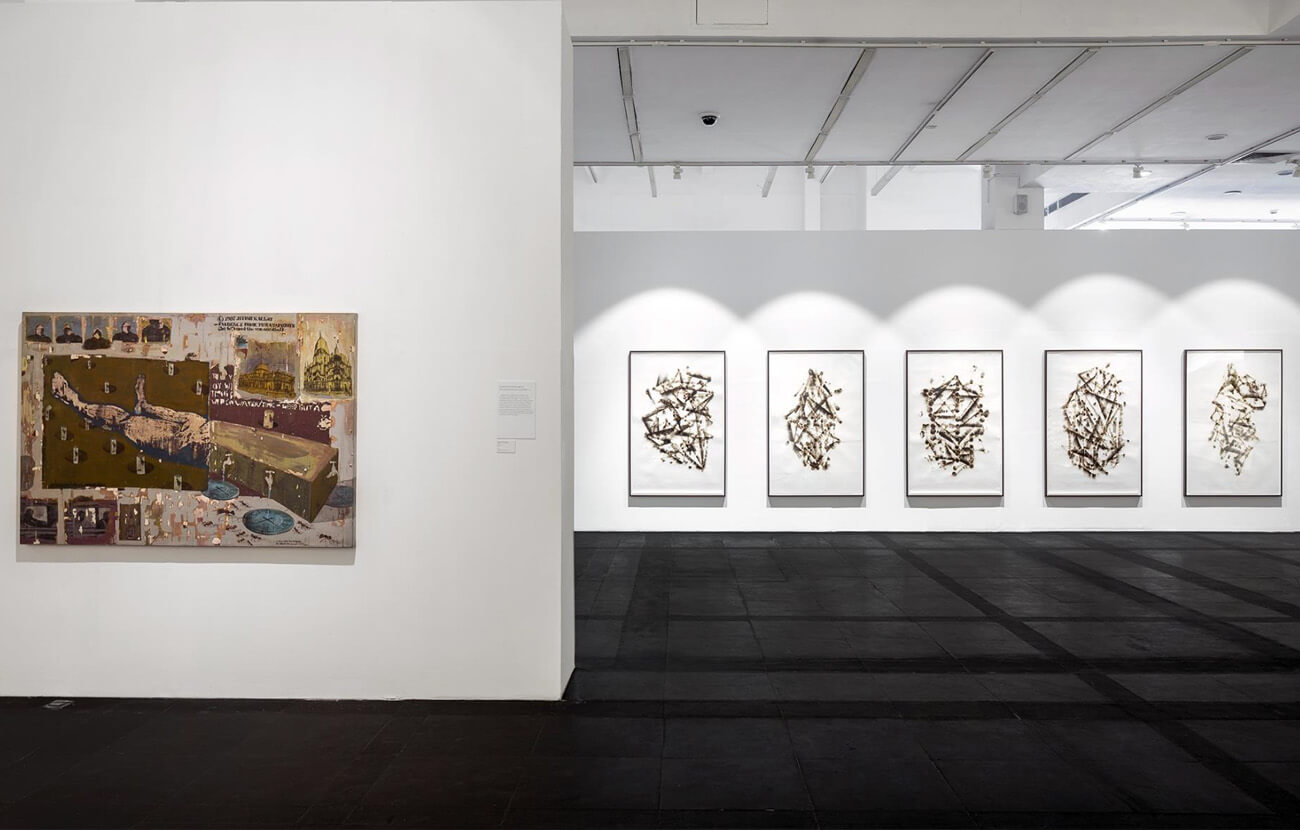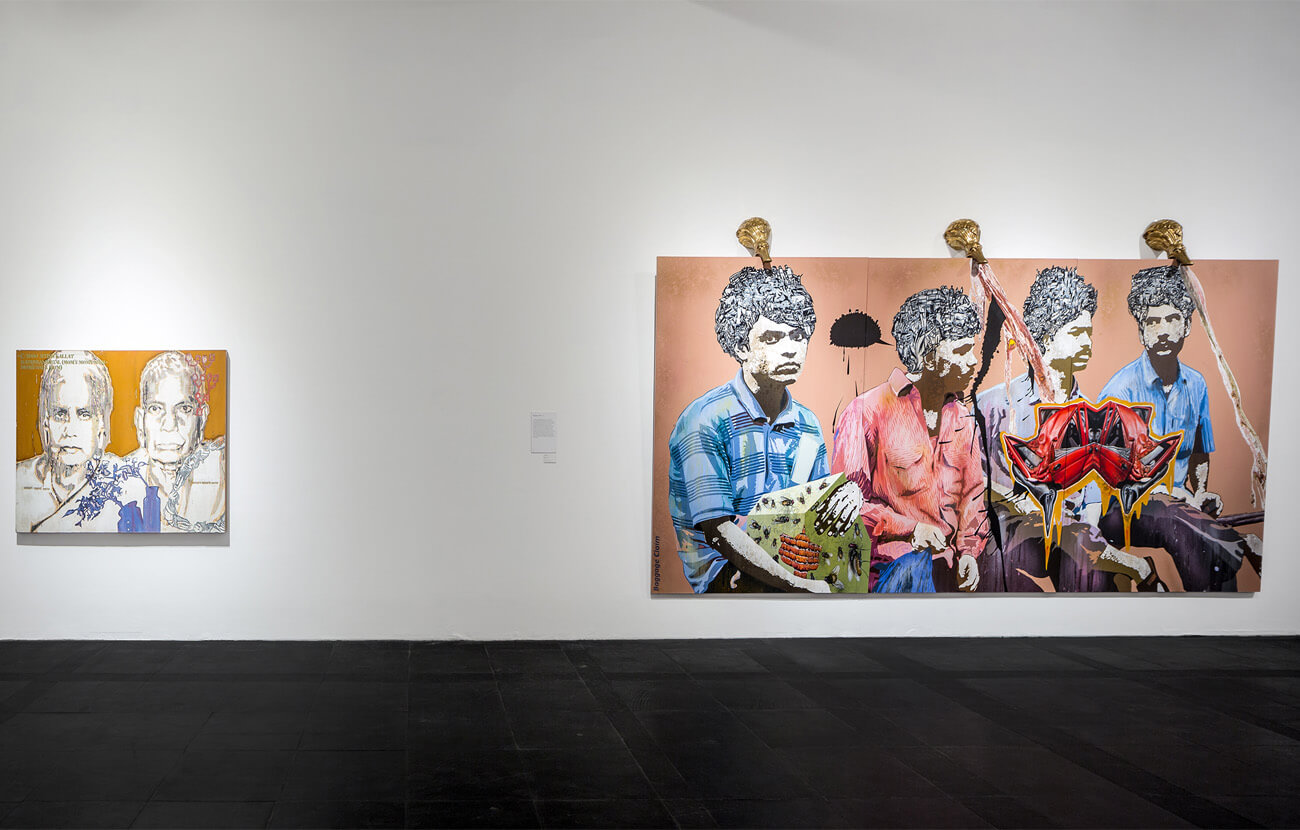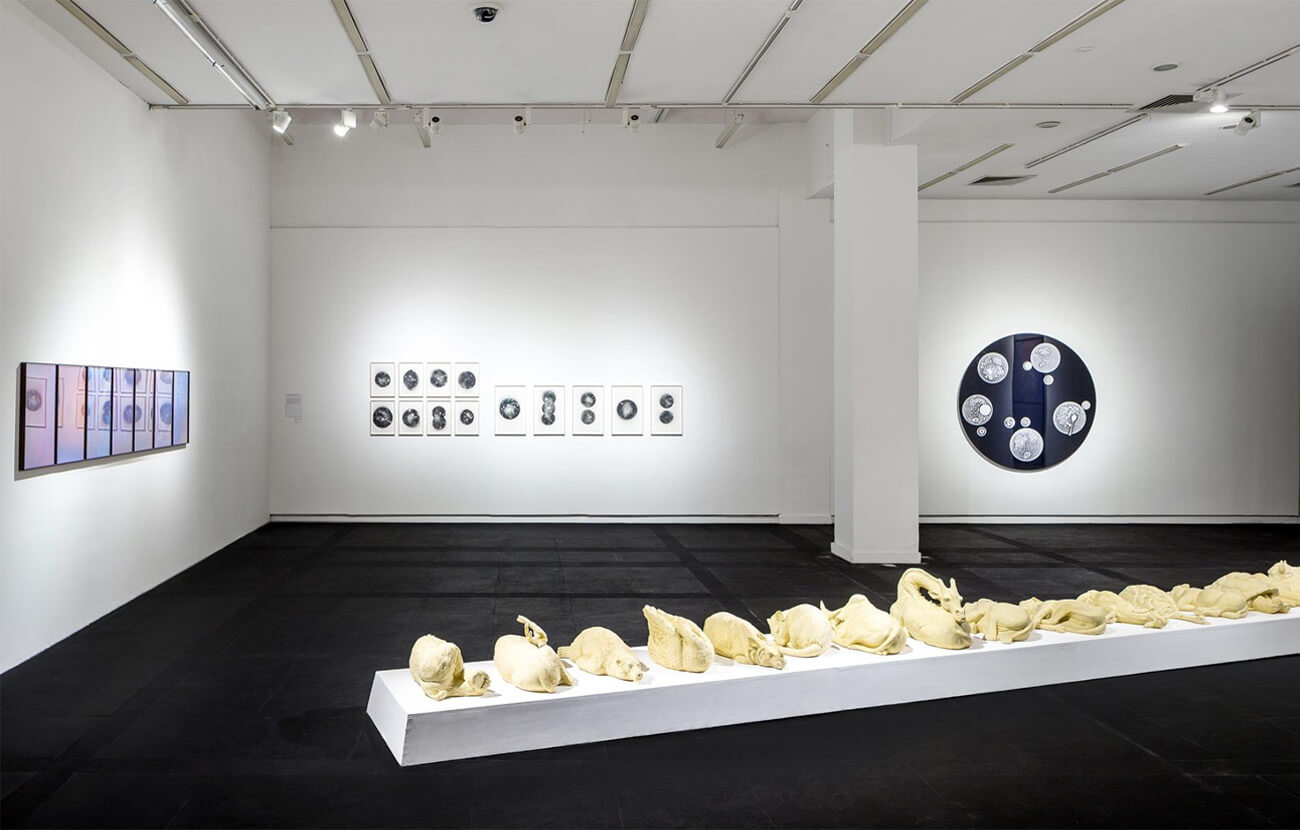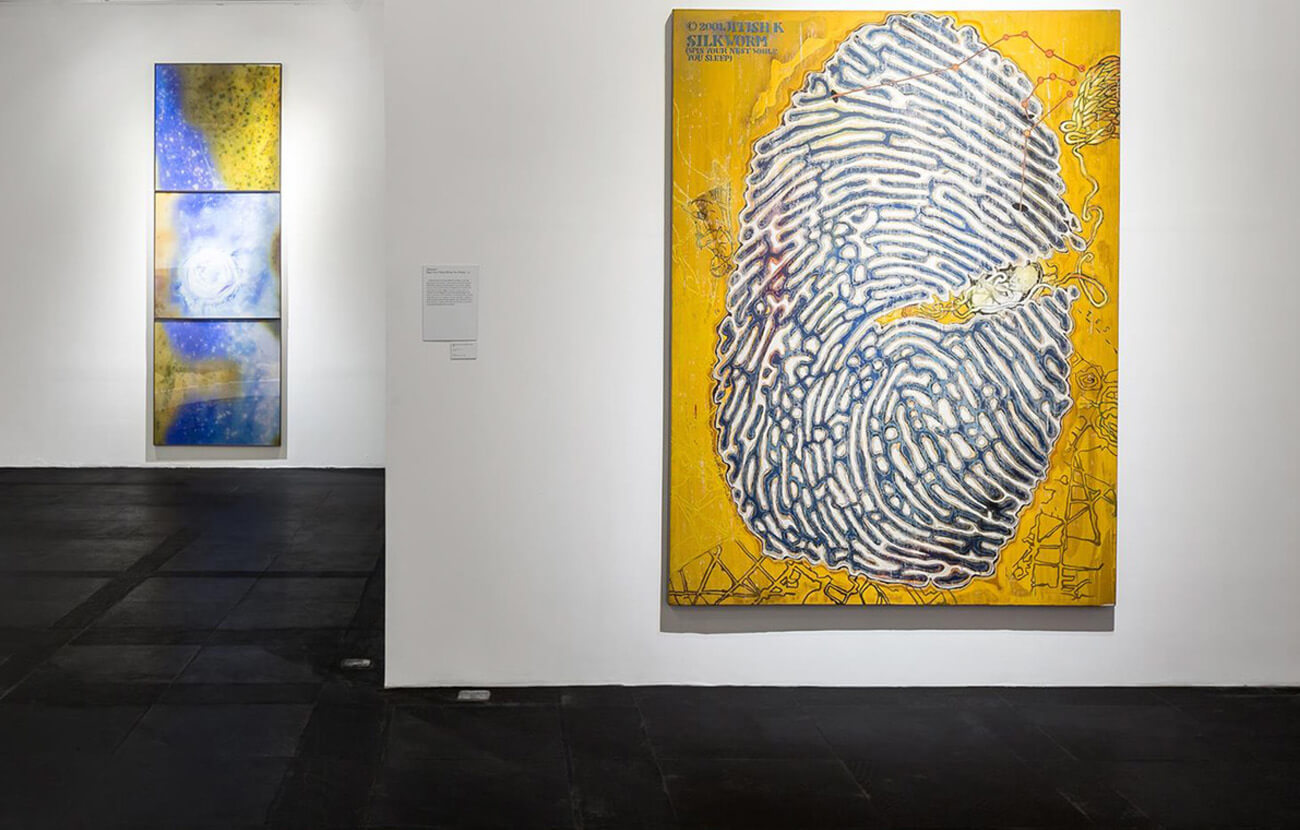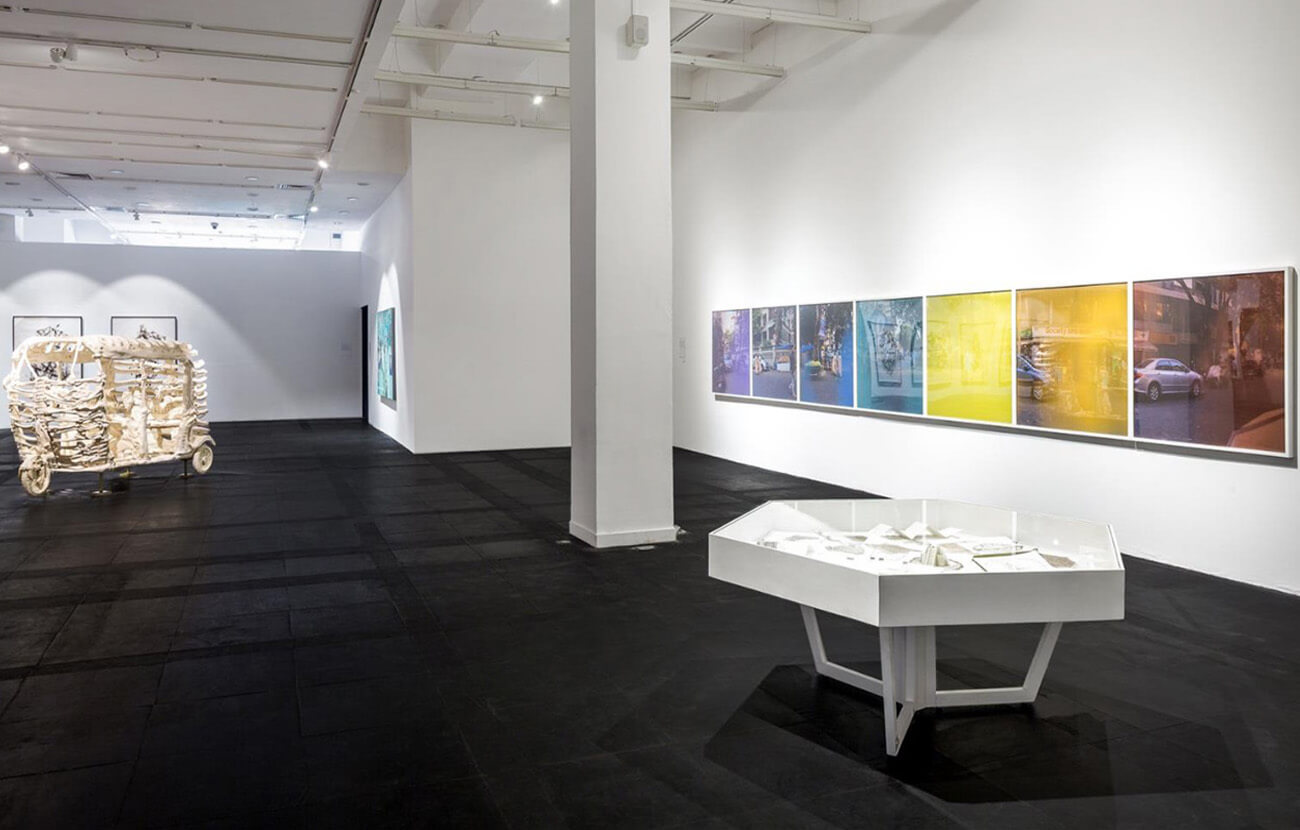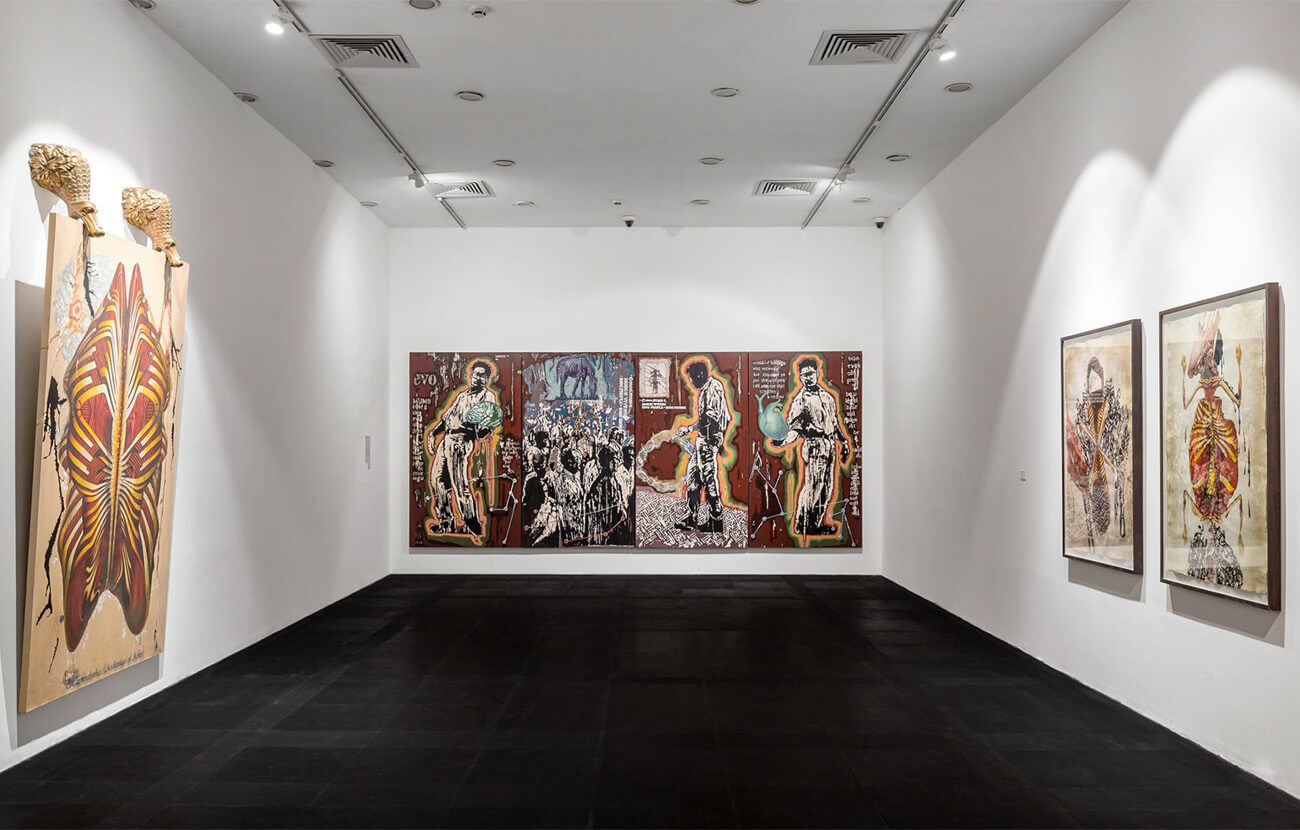Spanning painting, photography, drawing, video and sculptural installations, the works, presented here collectively for the first time, reveal the artist’s continual engagement with ideas of time, sustenance, recursion and historical recall, and his recurrent deliberations on the cosmopolis and the distant cosmos. Kallat’s oeuvre traverses varying focal lengths and time-scales. From close details of the skin of a fruit or the brimming shirt-pocket of a passerby, it expands to register dense peoplescapes and inter-galactic vistas. While some works in this exhibition meditate on the transitory, others reach back into history and overlay the past onto the present through citations of momentous historical utterances.
Here After Here does not follow a linear chronological trail. It unfolds as a polyphony of artworks that represent various junctures in the artist’s career, juxtaposed to enable new readings and reveal hidden relationships. The trilogy of Public Notice works made between 2003 and 2010 that invoke key historical speeches have been brought together for the first time. A deeply autobiographical work such as Epilogue (2011), retracing every moon the artist’s father saw in his lifetime, is placed in conjunction with 22,000 Sunsets (2001), the rendition of an urban moment which is simultaneously a recount of every sunset he ever saw. 22,000 Sunsets in turn provides a context to later works such as Spirit Level (2002) or Baggage Claim (2010), where everyday moments acquire the expanded scale of history painting; panoramic photographs such as Artist Making Local Call (2005) and Event Horizon (2014); or serial photo-works such as 365 Lives (2007) and The Cry of the Gland (2009). In works such as Forensic Trail of the Grand Banquet (2009) or Sightings (2015), images of food morph into interstellar imagery while the flux in the near atmosphere acquires astronomical dimensions in suites of drawings such as Wind Study (2015) and Rain Study (2016).
One might observe that the exhibition frequently shifts orders of magnitude, moving interchangeably between meditations on the self, the city-street, the nation and the cosmic horizon, as if to view the ephemeral within the context of the perpetual, the everyday in juxtaposition with the historical, the microscopic alongside the telescopic.

